
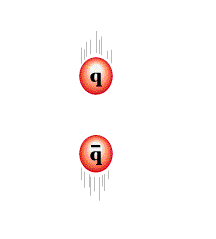
Dr. Akhtar Mahmood
Professor of Physics
University
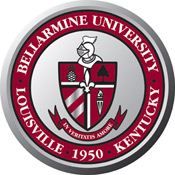
Pasteur
Hall 209-APhone: (502)272-7599
Fax: (502)272-8055
Email: amahmood@bellarmine.edu
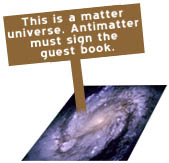
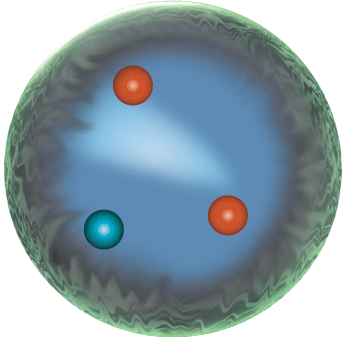
|
|
Dr. Akhtar Mahmood Professor of Physics University
Pasteur Hall 209-APhone: (502)272-7599 Fax: (502)272-8055 Email: amahmood@bellarmine.edu |
|
|
|
|









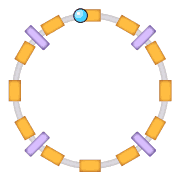
![]() EDUCATION:
EDUCATION:
![]() Ph.D., Physics (Experimental High Energy Physics),
State University of New York at Albany, 1998
Ph.D., Physics (Experimental High Energy Physics),
State University of New York at Albany, 1998
![]() MSc., Physics (Experimental High Energy Physics), State University of New York at Albany, 1994
MSc., Physics (Experimental High Energy Physics), State University of New York at Albany, 1994
![]() BSc., Computer Science with a Minor in Math.
(Summa Cum Laude with Honors),
Pennsylvania Western University (PennWest), 1992
BSc., Computer Science with a Minor in Math.
(Summa Cum Laude with Honors),
Pennsylvania Western University (PennWest), 1992
![]() PH.D. DISSERTATION:
PH.D. DISSERTATION:
“Observation of Several New Charmed-Strange Baryons at CESR-CLEO II”, State University of New York at Albany, UMI-98-41234-mc (microfiche), 501 Pages, 1998.
The research work was carried out using the data collected by the CLEO-II experiment at Cornell University’s 10.58 GeV CESR (Cornell Electron Storage Ring) Electron-Positron Collider. My thesis reports the evidence of eight new subatomic particles (collectively known as charmed-strange baryons).
![]() RESEARCH
INTERESTS:
RESEARCH
INTERESTS:
![]() High Energy Physics (Particle Physics)
High Energy Physics (Particle Physics)
![]() Astrophysics/Cosmology
Astrophysics/Cosmology
![]() Data
Science
Data
Science
![]() High
Performance Cluster and Grid Computing
High
Performance Cluster and Grid Computing
![]() EMPLOYMENT:
EMPLOYMENT:
6/14 – Present Professor, Department of Physics, Bellarmine University, Louisville, KY 40205.
8/07 – 5/14 Associate Professor, Department of Physics, Bellarmine University, Louisville, KY 40205.
9/07 – 5/12 Assistant Director, High Energy Physics Lab., State University of New York at Albany, Albany, NY 12222.
1/04 – 5/12 Adjunct Professor, Department of Physics, State University of New York at Albany, Albany, NY 12222.
8/04 – 5/07 Assistant Professor, Department of Physics & Technology, Edinboro University of Pennsylvania, Edinboro, PA 16444.
9/99 – 5/04 Assistant Professor, Department of Physics, University of Texas - Rio Grande Valley (UTRGV),, Edinburg, TX 78539.
8/98 - 8/99 Lecturer, Department of Physics, University of Texas - Rio Grande Valley (UTRGV), Edinburg, TX 78539.
1/94 - 7/98 Research Assistant, High Energy Physics Laboratory, State University of New York at Albany, Albany, NY 12222.
9/96 - 8/98 Assistant Systems Manager, High Energy Physics Laboratory, State University of New York at Albany, Albany, NY 12222
9/94 - 5/97 Teaching Assistant & Recitation Instructor, Department of Physics, State Univ. of New York at Albany, Albany, NY 12222.
9/93 - 5/94 Physics Laboratory Instructor, Department of Physics, State University of New York at Albany, Albany, NY 12222.
1/93 - 5/93 Research Assistant, Department of Office Systems and Business Education, Indiana University of Pennsylvania, Indiana, PA 15705
5/91 - 5/92 Physics Laboratory Assistant, Department of Physics, Edinboro University of Pennsylvania, Edinboro, PA 16444.
3/91 - 8/91 Research Assistant, Department of English, Edinboro University of Pennsylvania, Edinboro, PA 16444.
1/90 - 5/91 Computer Lab. Assistant, Computer Center, Edinboro University of Pennsylvania, Edinboro, PA 16444.
1/90 - 12/92 Office Assistant, Office of International Programs and Services, Edinboro University of Pennsylvania, Edinboro, PA 16444.
![]() TEACHING EXPERIENCE:
(27 YEARS OF TEACHING EXPERIENCE - 23 YEARS
FULL-TIME AND 4 YEARS PART-TIME)
TEACHING EXPERIENCE:
(27 YEARS OF TEACHING EXPERIENCE - 23 YEARS
FULL-TIME AND 4 YEARS PART-TIME)



A. COURSES & LABS. TAUGHT AT BELLARMINE UNIVERSITY (8/07 – PRESENT)
(1) IDC 100 Freshman Focus
(2) PHYS 105 and PHYS 105L Introduction to Astronomy and Lab
(3) PHYS 106 and PHYS 106L Explorations of the Universe and Lab
(4) PHYS 201 and PHYS 201LCollege Physics I and Lab
(5) PHYS 202 and PHYS 202L College Physics II and Lab
(6) PHYS 205 and PHYS 205L University Physics I and Lab
(7) PHYS 206 and PHYS 206L University Physics II and Lab
(8) PHYS 220 Research Methods in Phyics-I
(9) PHYS 307 and PHYS 307L Modern Physics and Lab
(10) PHYS 404 Classical Mechanics
(11) PHYS 405 Electricty and Megnetism
(12) PHYS 406 Thermal and Statistical Physics
(13) PHYS 408 Mathematical Methods in Physics
(14) PHYS 410 Quantum Physics
(15) PHYS 420 Computational Physics with Cluster Computing
(16) PHYS 440 Particle Physics & Cosmology
(17) PHYS 450 Special Topics in Physics
B. COURSES & LABS. TAUGHT AT EDINBORO UNIVERSITY OF PENNSYLVANIA (8/04 – 05/07)
(1) PHYS 101 Physical Science and Lab.
(2) PHYS 104 (new PHYS 202) Physics II and Lab.
(3) PHYS 205 (new PHYS 322) Physical Measurements Lab. I
(4) PHYS 206 (new PHYS 323) Physical Measurements Lab. II
(5) PHYS 254 (new PHYS 325) Introduction to Modern Physics
(6) PHYS 405 Modern Physics Lab.
(7) PHYS 441 Thermal Physics
(8) PHYS 335 (new PHYS 430) Electricity and Magnetism I
(9) PHYS 493 Independent Study (High Performance Cluster Computing with Physics Applications)
(10) PHYS 490 Independent Study (Computational Physics with High Performance Cluster Computing)
C. COURSES & LABS. TAUGHT AT THE UNIVERSITY OF TEXAS – RIO GRANDE VALLEY (9/98 – 5/04):
(1) PHYS 1401 General Physics I
(2) PHYS 1401L General Physics I lab.
(3) PHYS 1402 General Physics II
(4) PHYS 1402L General Physics II lab.
(5) PSCI 1421 Physical Science I
(6) PSCI 1421L Physical Science I Labs.
(7) PHYS 1422 Physical Science II
(8) PHYS 2301 Intermediate Physics I
(9) PHYS 2101 Intermediate Physics Lab. I
(10) PHYS 2302 Intermediate Physics II
(11) PHYS 3402 Modern Physics
(12) PHYS 4301 Topics in Modern Physics
(13) PHYS 3303 Heat and Thermodynamics
(14) PHYS 3305 Classical Mechanics
(15) PHYS 3301 Electromagnetic Theory I
(16) PHYS 4301 Introduction to Quantum Mechanics
(17) HONORS 3187 Honors Topics
(18) HONORS 3387 Honors Research (High Energy Physics Research and Data Analysis)
(19) HONORS 4387 Honors Thesis – (Theoretical/Experimental Particle Physics)
(20) PHYS 3101 Junior Physics lab. I. (Laboratory Project)
(21) PHYS 3102 Junior Physics lab. II. (Laboratory Project)
(22) PHYS 4101 Senior Physics lab. I. (Laboratory Project)
(23) PHYS 4102 Senior Physics lab. II. (Laboratory Project)
(24) PHYS 4103 Senior Physics lab. III. (Laboratory Project)
D. COURSES & LABS. TAUGHT AT THE STATE UNIVERSITY OF NEW YORK AT ALBANY (9/93 – 8/98):
(1) PHY 105N General Physics I
(2) PHY 106 General Physics Lab. I
(3) PHY 109 General Physics Lab. II
(4) PHY 120N Introductory Physics I
(5) PHY 124N Introductory Physics II




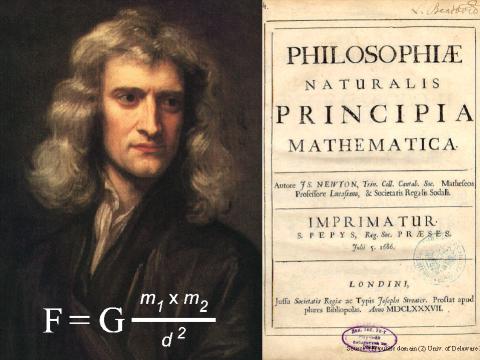
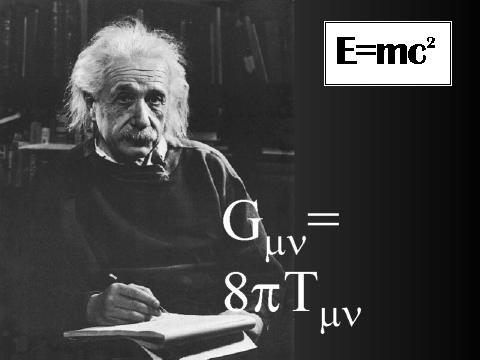

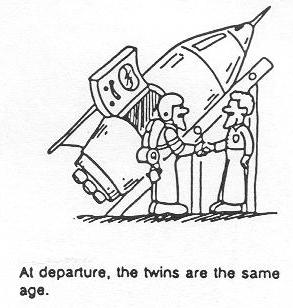
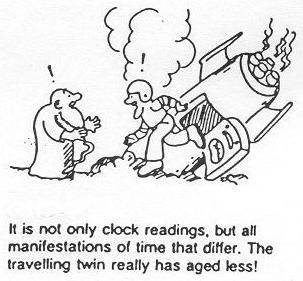
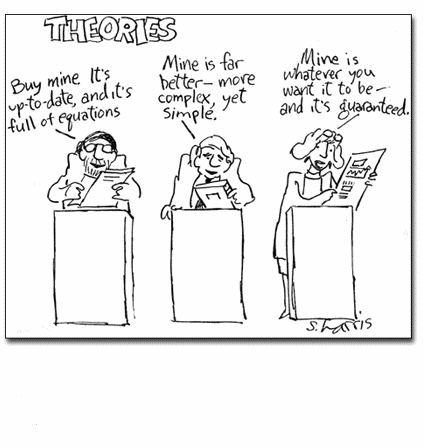

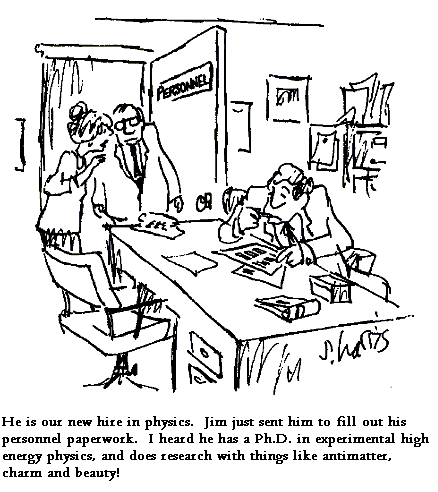
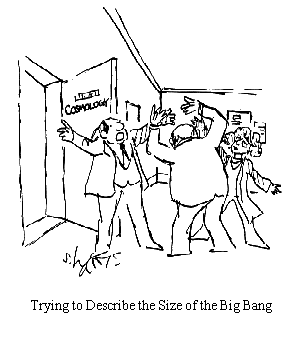

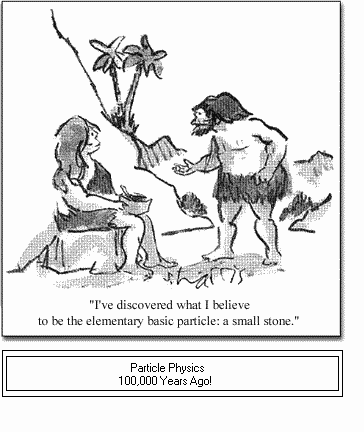
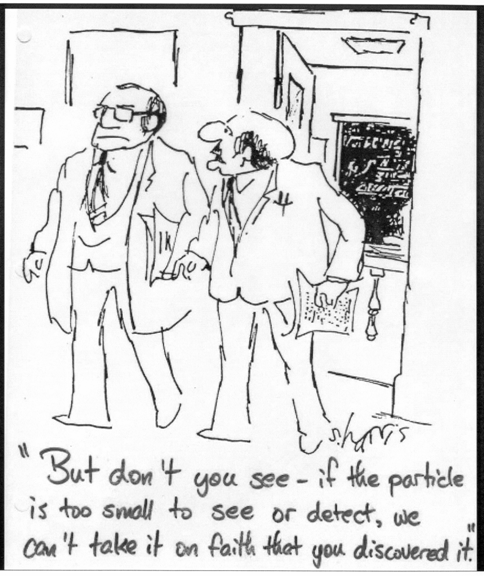
A. RESEARCH IN HIGH ENERGY PHYSICS:
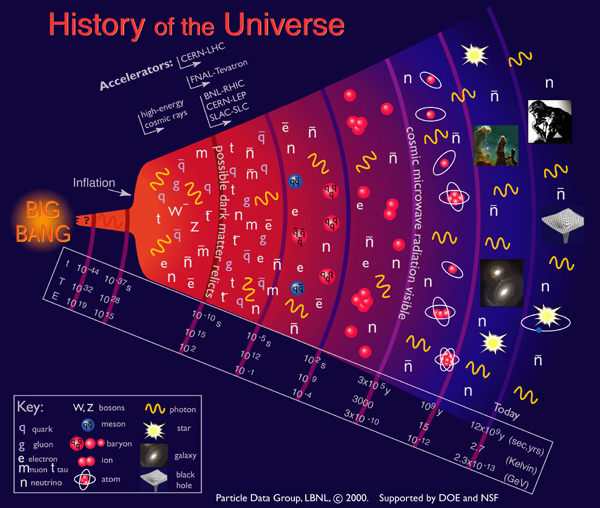
It has long been established that space is expanding from the very moment after the birth of the Universe, which we call Big Bang. Indeed, current research in astrophysics, high energy physics and cosmology provide important clues to the Big Bang. Research in Experimental High Energy Physics is full of new challenges and surprises, often resulting in new exciting discoveries. High energy physicists today is aiming to take physics to the next step, towards finding a deeper set of physical laws that govern our Universe. No one can say when this will happen, but there is a growing sense within the High Energy Physics community that it is within our reach. Nowadays, studies in high energy physics also strongly overlap with Astrophysics, Cosmology, and to some extent with Gravitational Physics and Astronomy.



Take an interactive tour of our universe and view the Milky Way at 10 million light years from the Earth. Then move through space, through the Milky Way Galaxy towards the Solar System and Earth in successive orders of magnitude, until you reach the subatomic particles -- the protons, the electrons, and finally the quarks, which are the fundamental constituent of matter.
If you want to learn more about the History and the Fate of our Universe, then click here. You can also take the Particle Adventure tour by clicking here. If you want to learn more about latest theoretical advancements in particle physics, then click here.




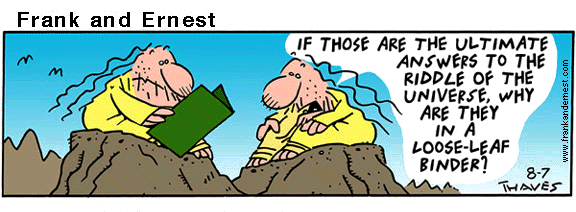
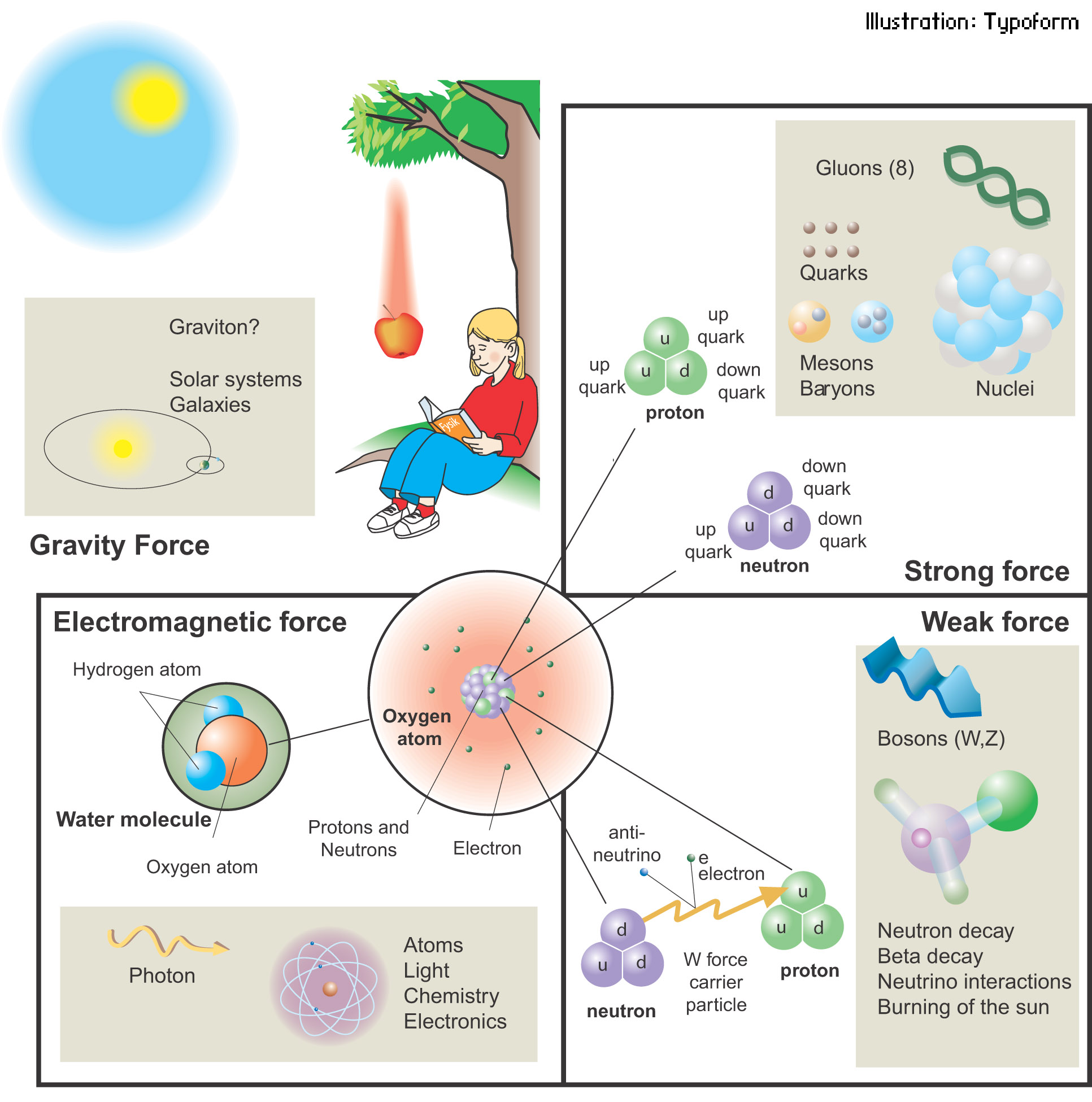
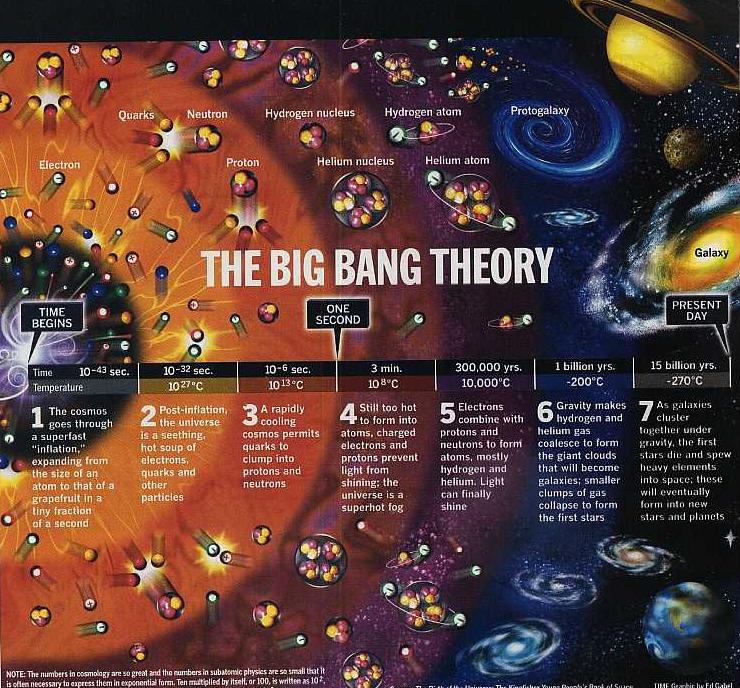

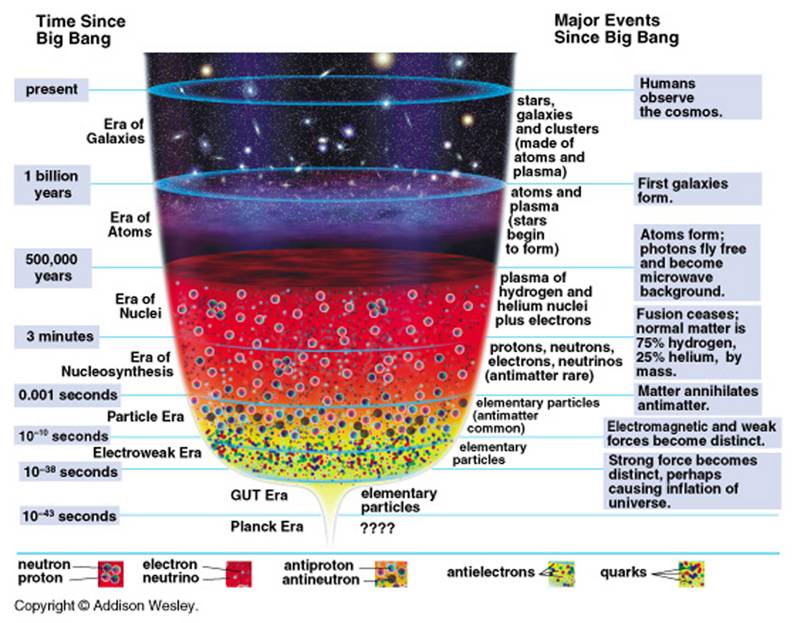
We have observed that all distant galaxies are moving apart from each other as a result of this expansion. Whether the expansion of the universe will speed up, slow down, or even possibly reverse, and collapse (close) into itself through gravity will depend on the amount and types of matter and energy contained in the universe. Ordinary hadronic matter that formed the protons, neutrons, nuclei and the atoms in the early universe can only account for the visible mass in galaxies and clusters, which is only a small fraction (less than 5%) of the total mass/energy of the universe. So, a new type of matter, not made of atoms must exist, which we call dark matter (since it is non-luminous).
Even stranger, recent discoveries indicate that most of the matter in the universe is dark energy, unlike any conventional matter we currently know today. The observations of supernovae from distant galaxies indicate that the empty space in the universe is filled with dark energy, which is pushing the universe to accelerate at an ever-increasing rate, thus overwhelming the pull of gravity, unlike anything we have seen before. While ordinary and dark matter pulls the universe together, dark energy seem to accelerate the universe. The nature of dark matter and dark energy are among the two new challenging questions facing high energy physics today.

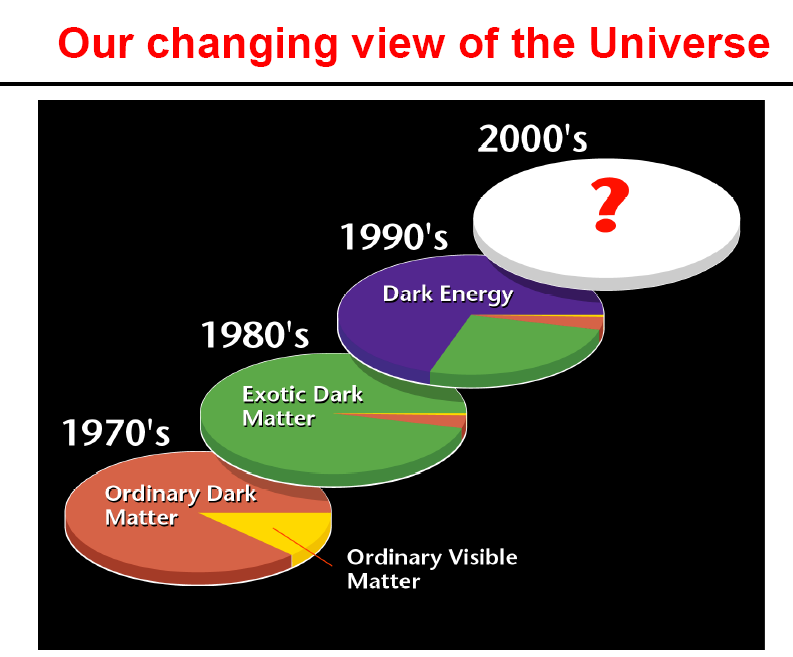
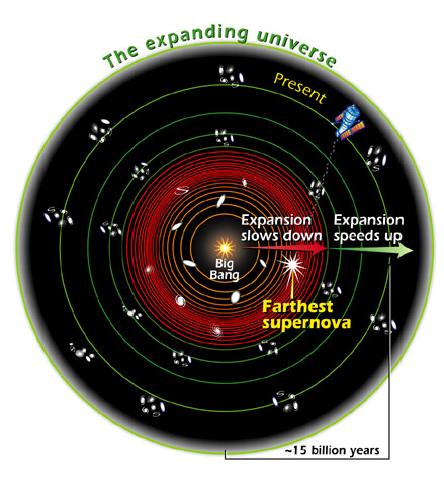
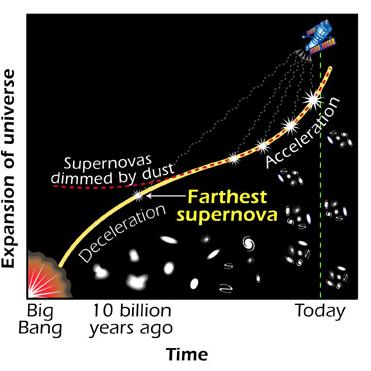
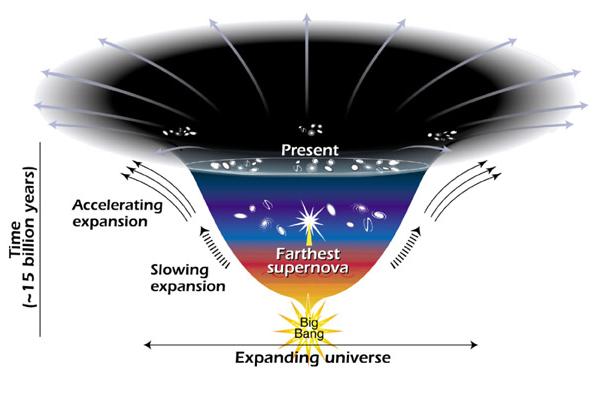
Indeed, new elementary particles that will be discovered within the next two decades will help us to answer some of the fundamental questions in modern science about the structure of matter and the universe itself. I believe that within the next decade, research in high energy physics will provide new discoveries that will revolutionize our understanding of the universe and the fundamental structure of matter. Over the past several decades, new experimental discoveries and insights in High Energy Physics have significantly advanced our understanding of the universe. One of my goals is to discover new subatomic particles and phenomena, beyond what is known today. I am sure there are a lot of surprises awaiting us in the near future, as we attempt to learn more about the Universe through research in high energy physics. For many research questions, the answers are predictable, but when the question is a challenging one, the answer can be a surprise and somewhat unexpected, often resulting in an exciting discovery. Today, research in High Energy Physics takes us to the past, back in time, to fractions of a second after the explosive birth of the universe, the Big Bang.
Since the beginning of history, throughout the ages of all cultures, mankind has marveled at the diversity and complexity displayed by nature. We all at some point have asked many intriguing questions about the universe that for some reason seem quite unanswerable. Research in High Energy Physics attempts to answer some of the most intriguing and challenging questions, such as - (i) how did the universe begin and how did it become the way it is?, (ii) what is the universe made of and what are the smallest constituents of matter?, (iii) what is the origin of the mysterious attribute of matter called mass?, (iv) what is the ultimate fate of the universe? and (v) why does the universe consist of only matter and not antimatter? Over the past century, high energy physicists have used tools of ever-increasing power and energy to look into the very heart of matter in the continuing quest to find nature's basic building blocks and to discover the simple physical laws that make our universe more understandable. The discoveries made in High Energy Physics help us to understand not just the physical world around us, but also the origin and the ultimate fate of the universe. Through the study of subatomic particles and forces, we are just beginning to unravel how the universe itself developed in the first moments of the Big Bang burst of infinite energy from a single point source of almost negligible dimension.
Modern particle accelerators create the feeble imitations of the Big Bang - for very short times, when the fundamental particles and the forces that govern them were beginning to form. We see that the pattern of particles uncovered in accelerators influenced the initial conditions of the universe so as to produce the world we live in. Particle accelerators and their detectors are designed to re-create and re-produce for a fleeting instant, in a smaller volume, the Universe, as it existed a few micro-seconds after the Big Bang. At that time, six type of quarks (up, down, strange, charm, beauty, and top) were produced, but only the up and the down quarks along with the strong force carrier, gluons combined to form protons and neutrons, which then bound together to form the nuclei of the Atom of ordinary matter. The other four types of quarks (strange, charm, beauty, and top) can be re-created using particle accelerators, through a series of events that will eventually decay into the stable up and down quarks.
We all notice that the universe contains a preponderance of over antimatter. But, the early universe was made up of an almost exactly equal number of matter (particle) and antimatter (antiparticle). Most of these particles quickly paired up and annihilated each other. However, a very tiny excess of matter over anti-matter in the early universe has persisted until the present time, allowing everything in the universe to exist. Thus we suspect that the laws of nature must somehow discriminate between the opposite forms, otherwise we would not exist, and matter which forms the stars and everything in the universe would have annihilated. In the past few years, striking new progress in understanding the distinction between matter and antimatter has come from the accelerator-based high energy physics experiments.
According to some new theories in high energy physics, extra higher dimensions have been predicted. We live in a world that has the usual 3 space dimensions and one time dimension. Therefore, at the macroscopic level, any space dimensions beyond 3, seems unphysical; so, we tend to regard higher extra space dimensions beyond 3 as a science-fictional entity. It is predicted by some of the current theories that such new extra space dimensions are compactified at smaller distances at the sub-microscopic level. We however do not quite know the range of this sub-microscopic distance. Indeed, any evidence of new extra higher dimensions will revolutionize the science of space and time. It is quite possible that due to the some peculiar properties of gravitons (the carrier of gravitational force), the universe extends in a 4 + n dimensional space, while we are trapped inside the 4 dimensions (3 of space and one of time). Therefore, we are certainly on the threshold of another new era of discoveries as we step into the 21st century.
Scientific studies in High Energy Physics have also enriched society by the new understanding and applications of matter at the quantum level. For example, the ability to produce new materials in nature, are the results of the information gained from the understanding to the proton, neutrons, electrons, and other fundamental particles. Our computer based information age rests upon the intellectual foundation of the quantum revolution early this century. The subatomic particle, electron, is a vital component of matter and has triggered the 20th century revolutions of electronics and computing.
Advances in High Energy Physics depend on the advancing technology of the tools of research. An important part of the science of experimental High Energy Physics is the never-ending development of accelerator and detector technology to reach ever higher energies. Indeed, the search for the challenging questions of nature makes extreme demands on experimental techniques. In meeting these challenges, new instruments and technologies are created with enormous potential for other sciences, and for practical applications. Hence, there are many spin-offs of High Energy Physics research.
The challenge of rapidly analyzing vast amounts of data from accelerator-based experiments has contributed to advances in cost-effective high–performance computing and internet communications. This need for rapid and effective communication among high energy physicists, led to the invention of the tool known as the World Wide Web (WWW) in the early 1990s. The Web was originally developed as a data communication tool for experimental high energy physicists around the world. Since then, the Web has indeed revolutionized the entire world, as far as information technology is concerned. Particle physicists have constantly been finding more and more effective ways of making measurements, faster ways of recording and analyzing data, and better ways of sharing and distributing information. To address the new challenges of large-scale multi-institutional collaborative data analysis tasks and due to the rapidly growing experimental datasets, global grid computing projects have recently been proposed.
Accelerators designed for research to collide subatomic particles have now become instruments for medical diagnosis and treatment. Particle accelerators are used to treat cancerous tumors that are inoperable or resistant to traditional radiation therapies. The technological base of cancer radiation therapy is the electron linear accelerator. Particle beams and detectors used in High Energy Physics research have also led to the development of new proton cancer therapies. At present, medical studies have shown that one in three of us will have an encounter with cancer, and in developed countries, about one in eight will have this treated by a linear accelerator.
Also the R&D of superconducting magnet designs used in accelerators has substantially improved the sensitivity, speed and resolution of MRI machines. In hospitals and medical centers, the very detectors built to produce fine images of subatomic particle tracks are now being used for visualizing the human body by using these particle imaging techniques. Thus medical imaging is a spin-off of experimental High Energy Physics research, which has led to the development of PET (Positron Emission Tomography). All these spin-off applications have greatly benefited society.
High Energy Physics therefore plays an important part in advancing our scientific knowledge about inventing hi-tech applications as well as enriching technical education. X-rays and ultraviolet light from the particle accelerators known as synchrotron light sources provide valuable information about chemical composition, the dynamics of structural transition, and the magnetic properties of matter, which benefits the petrochemical, pharmaceutical, semiconductor and computer industries. Indeed, the R&D in high energy physics pushes the state of art in many directions, and has benefits well beyond the field of high energy physics. Indeed, High Energy Physics today is an exciting and vibrant field that is poised to make new discoveries in the next two decades and beyond.
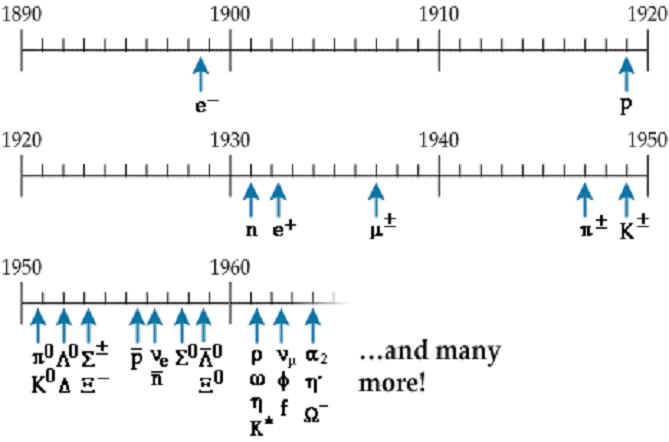

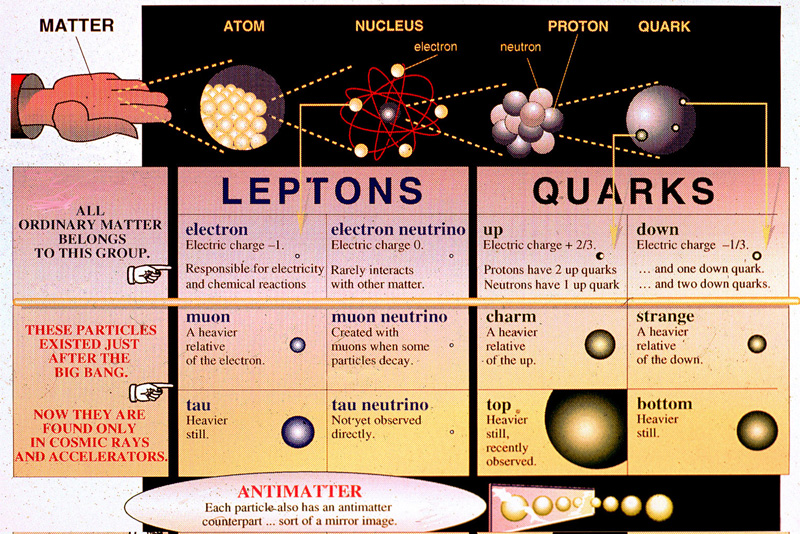

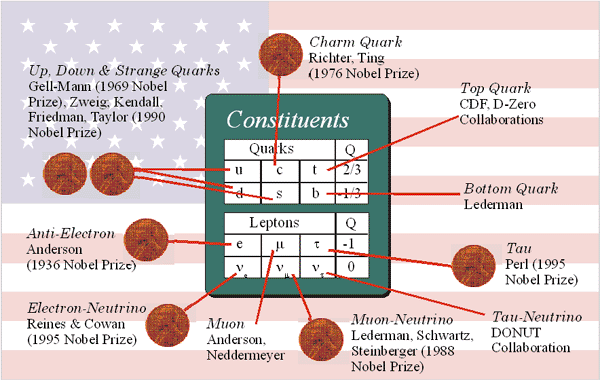
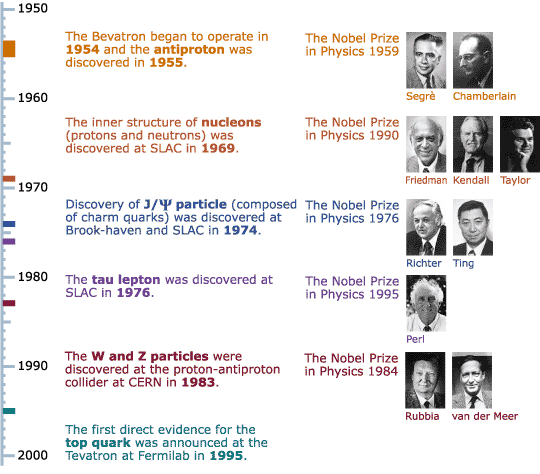
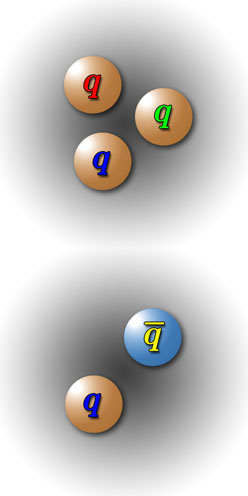
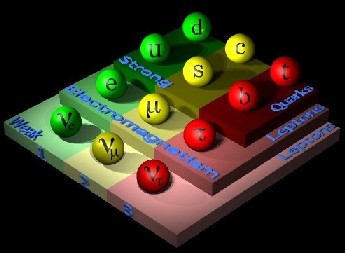


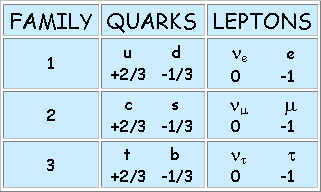
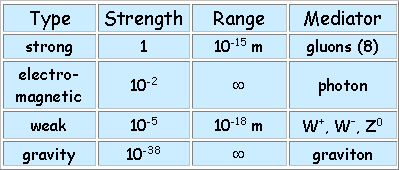

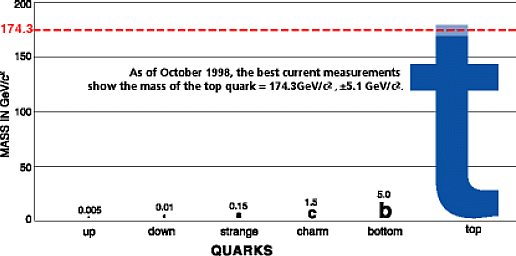
A1. Research Activities in Experimental High Energy Physics with the BABAR Experiment at SLAC (2005 - Present):
I currently have an active research program in High Energy Physics at Edinboro University of Pennsylvania in collaboration with the High Energy Physics Laboratory at the State University of New York at Albany (SUNY at Albany) with the world renowned BABAR high energy physics experiment located at the Stanford Linear Accelerator Center (SLAC). As a member of the SUNY-Albany’s High Energy Physics research group, my research work is being funded by a research grant from the Department of Energy (DOE). My research activities at SUNY at Albany are also funded by a research grant from the National Science Foundation (NSF). To carry out my research work, I also use the resources and research facilities of the High Energy Physics Lab. at SUNY at Albany. When needed, I get assistance from a post-doc at SUNY at Albany’s High Energy Physics Research Laboratory. At SUNY at Albany, I have served on the Ph.D thesis committees of several doctoral students in area of high energy physics.
Since the electrons and positrons in the SLAC accelerator travel head-on near the speed of light at 10.58 GeV, the BABAR detector is designed to recreate and re-produce for a fleeting instant, the structure and composition of the Universe as it existed a few micro-seconds after the birth of the extremely hot, dense Universe. The energy of 10.58 GeV is optimal for investigation of particles containing the heavy charm and the beauty and quarks. These intense high energy collisions convert energy into matter inside the BABAR detector, producing a host of mesons and baryons, among other elementary particles. At a few micro-second after the Big Bang, a host of particles such as mesons and baryons (collectively known as Hadrons), made up of both light, charm and beauty quarks, populated our Universe. These subatomic particles provide crucial clues about the composition and the constituents of matter and our understanding of the origin and evolution of matter in the Universe. Quarks are now regarded as the fundamental building blocks of matter. As the universe cooled, free quarks and gluons combined into protons and neutrons, which then bound together to form the nuclei of the Atom.
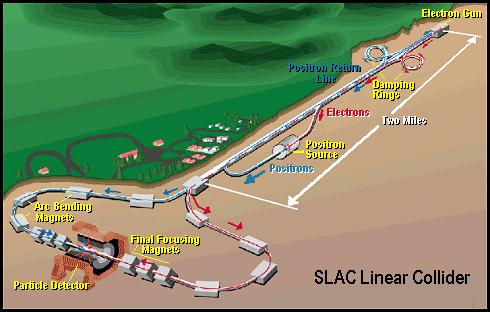
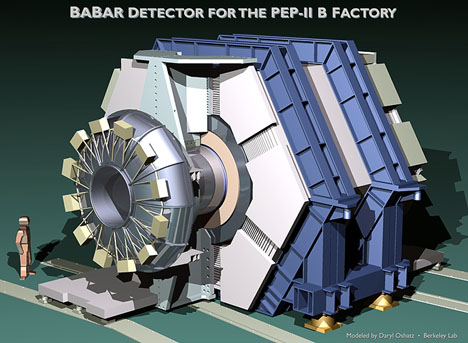
I am particularly interested in searching for new orbitally-excited single charmed baryon and ground-state double-charmed baryon states with the 300 fb-1 of BABAR data abd study the mass spectrum of these particles. I am also interested in searching for ground-state exotic charmed pentaquark states. A host of charmed baryons and pentaquark states existed about one micro-second after the Big Bang and have since decayed to protons, a primary constituent of the nucleus of ordinary matter. These charmed baryons and pentaquark states provide important information about the constituents of matter in the early universe in the hadron era. Weak decays of heavy hadrons present a very rich field of phenomena in heavy quark confinement. Studies of charmed hadrons provide crucial QCD information. Although, QCD has been accepted as the fundamental theory of strong interaction, understanding the “low-energy” behavior of QCD and the nature of strong interactions of matter however remains a challenge. Lattice QCD calculations have provided useful information. HQET and phenomenological quark model analyses of hadron spectroscopy have also provided useful physical information. However, the color structures available in baryons and mesons are limited. Although only (qqq) and (q-qbar) states have been studied so far, other combinations of multiquark (pentaquark) states such as (qqqqq-bar) can also form color singlets. Multiquark systems involve more complicated color structures that cannot be studied directly in a meson or a baryon system. Therefore, multiquark systems are indispensable for the study of the low energy behavior of QCD and the structure of strongly interacting matter. Identification of multiquark states by itself is an interesting topic. QCD imposes no specific limitations on the number of quarks composing hadrons other than that they form color singlet states. These exotic hadron structures of multiquark states are indeed spectacular predictions of QCD, which go beyond the quark model of the conventional mesons and baryons. Unfortunately, we do not have any evidence of these states, yet.
Although the rapid development of hadron spectroscopy has led to a significant advancement in the systematics of ordinary “light” baryons with the simplest valence quark structure, the complexity of the heavy hadron system has indeed prevented the emergence of a coherent and a comprehensive picture of charmed baryon production and decay. The investigation of properties of hadrons containing one or more heavy quarks is very important for understanding the dynamics of quark and gluon interactions. Weak decays of charmed hadrons allow us to understand the interplay between the strong and the weak interactions. Complications arise in the weak interactions underlying the hadronic charm weak decay because the quarks are bound inside hadrons by the strong force. These interactions of light-hadron spectrum of heavy-light physics, which are theoretically described by a number of QCD models are often difficult to predict accurately due to the strong-interaction dynamics - because of the large strong couplings at the typical energies of charm decays. To constrain these models, it is important to provide as much experimental information as possible on charmed baryons.
High energy physics experiments typically generate large amounts of experimental data. The actual data is taken at the experimental site, and then it is filtered to reduce the background noise in order to carry out the various physics analyses tasks. Members of the collaboration who come from various institutions, all work together to search for new physics phenomena and the existence of new types of matter (subatomic particles) from these large experimental datasets. At Edinboro University of Pennsylvania, I have set up a web-based Data Analysis Research Lab. with a PC Server (running Apache and PHP) and use the CYGWIN software to create a Linux-like environment in Windows. To carry out my data analyses tasks I use the ROOT software package to search for orbitally-excited state single-Charmed Baryon states, and ground-state double-Charmed Baryon states from the filtered BABAR datasets. Along with my research students, I have also built two Beowulf Clusters (one is an 8-node cluster called SPHINX-1 and the other is a 25 Glops 8-node cluster called SPHINX-2 with 2.3 TB of disk storage space). Over the past two years, I have supervised eight independent study undergraduate students from physics and one IT graduate students who have worked on my research projects in both high energy physics and high performance cluster computing, using these Beowulf clusters. Several of my students have presented their research results at the local AAPT (American Association of Physics Teachers) conference. My research work at Edinboro University of Pennsylvania is funded by the Pennsylvania State System of Higher Education (PASSHE)’s Faculty Professional Development Council Program (FPDC) and the University Faculty Senate Research Grant Program. Several undergraduate students are currently working with me in my research projects.

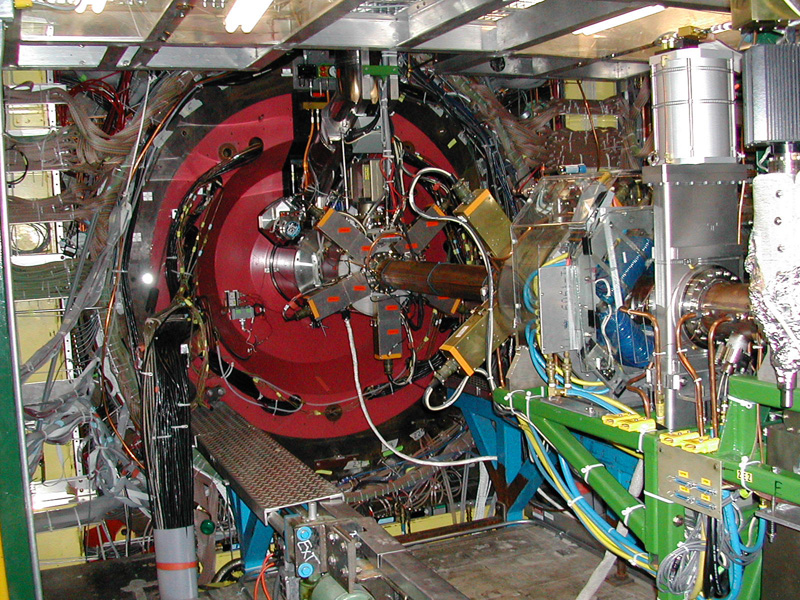
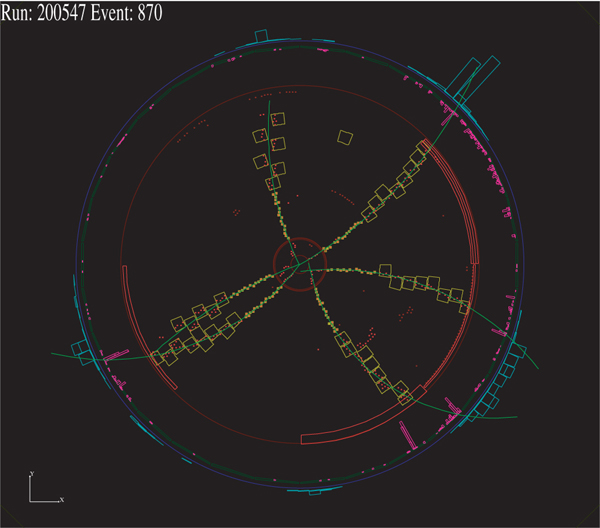
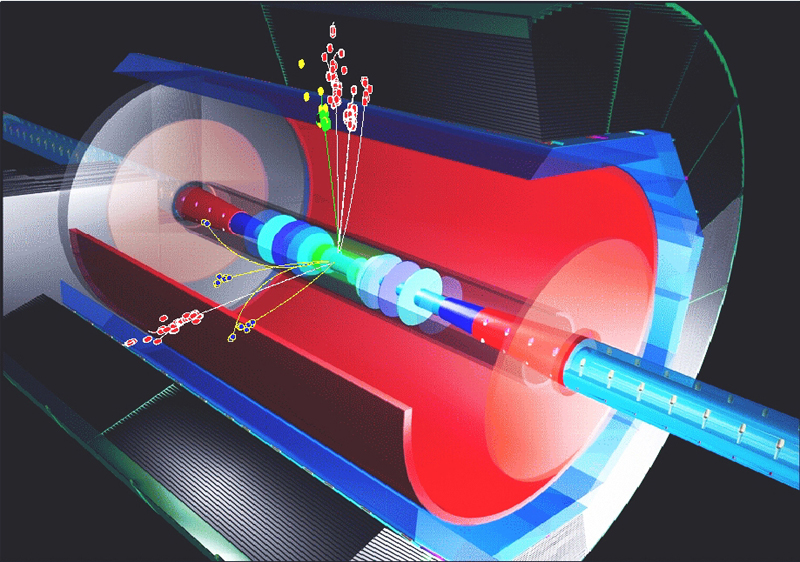
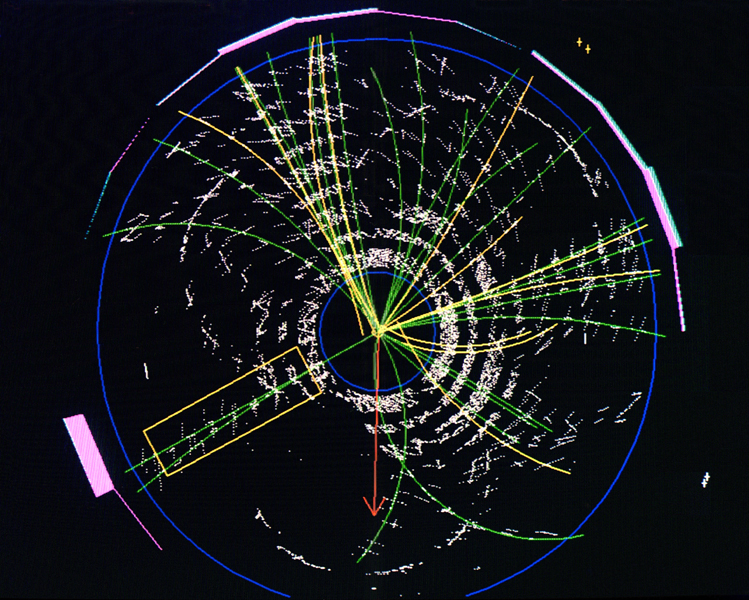
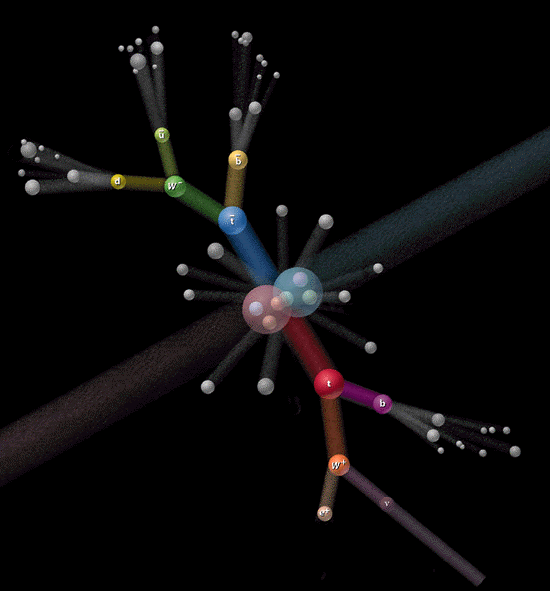
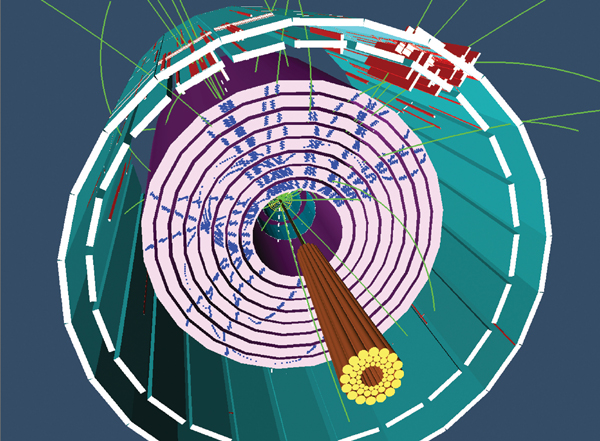
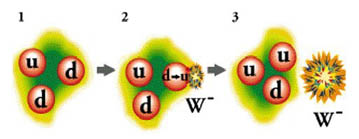
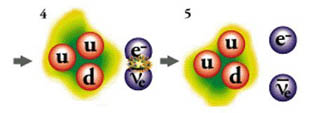

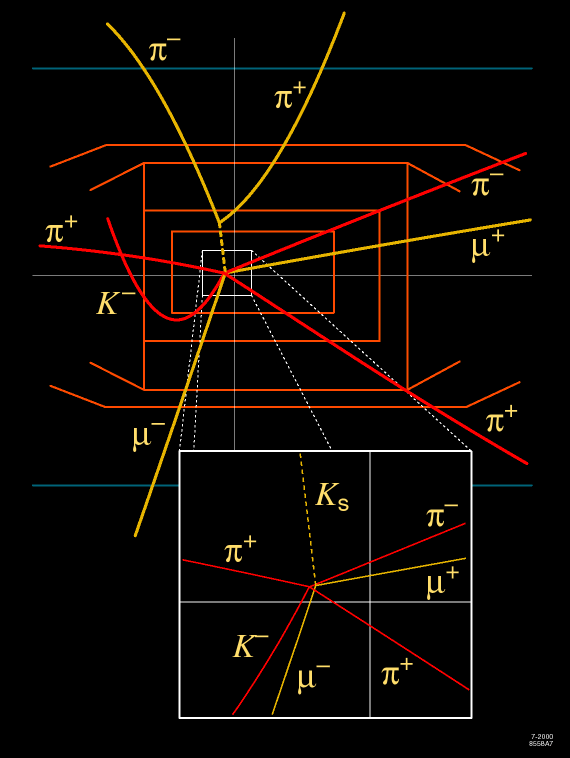

Yep! Life at the accelerator is all peanuts. Click here for details.
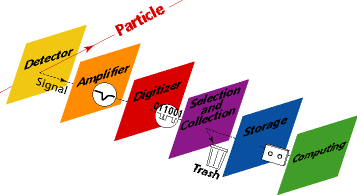

A2. Research Activities in Experimental High Energy Physics with the CLEO Experiment at CESR (1994 - 2004):
I conducted my research work in high energy physics for ten years with the CLEO experiment at the CESR (Cornell Electron Storage Ring) facility, located at Cornell University. The CLEO experiment provided rich experimental data on charmed baryon production for over two decades. For more information about the CLEO experiment, you can take an animated video tour of the CESR facility and the CLEO detector. At CLEO I have made the discovery of eight new subatomic particles (called charmed baryon), namely, the spin-1/2+ (Xc+/), spin-1/2+ (Xc0/), spin-3/2+ (Xc*+), spin-3/2+ (Xc*0), spin-1/2- (Xc10), spin-1/2- (Xc1+), spin-3/2- (Xc10), and the spin-3/2- (Xc1+) states. All of these discoveries have been published by the CLEO collaboration in the prestigious peer-reviewed journal, Physical Review Letters. I have also reported these discoveries at several national conferences.
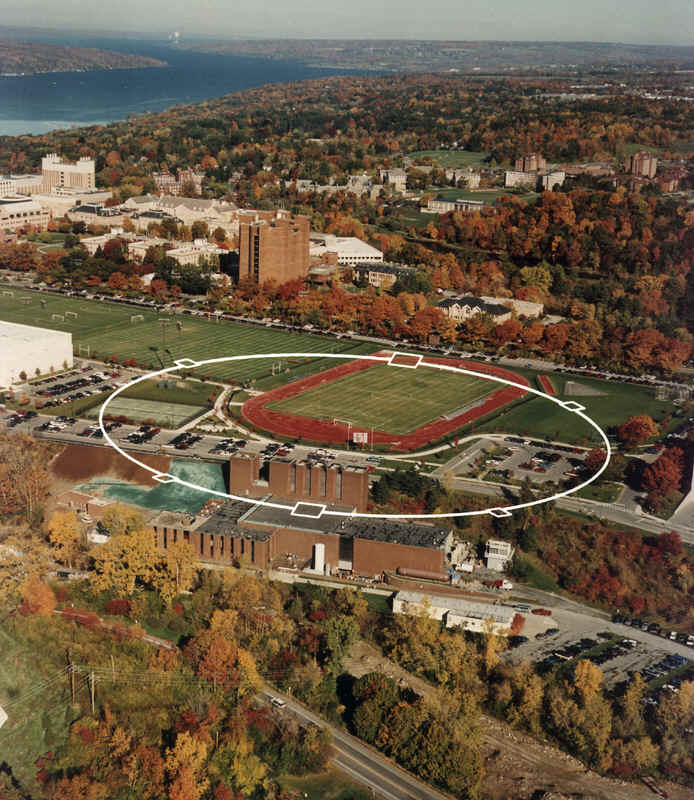
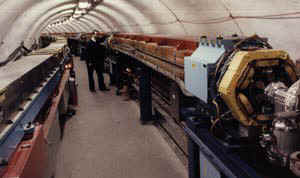
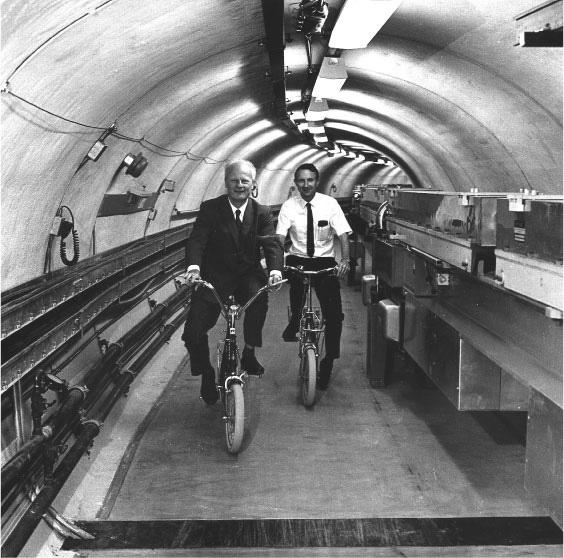
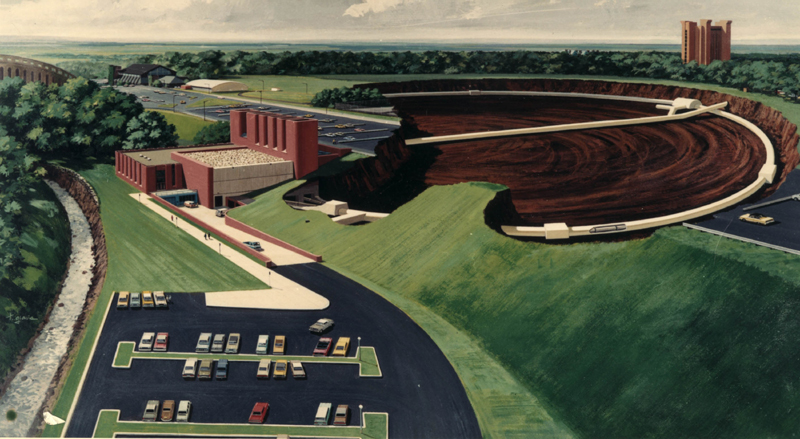
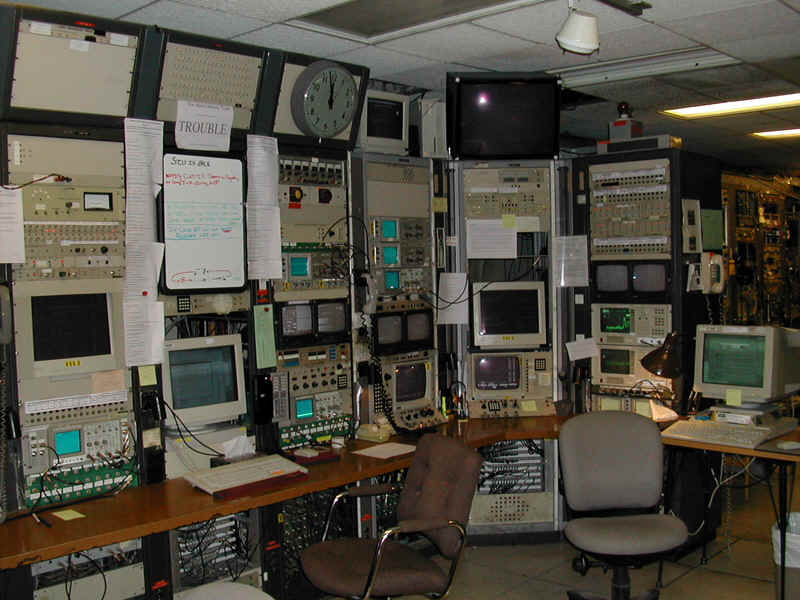
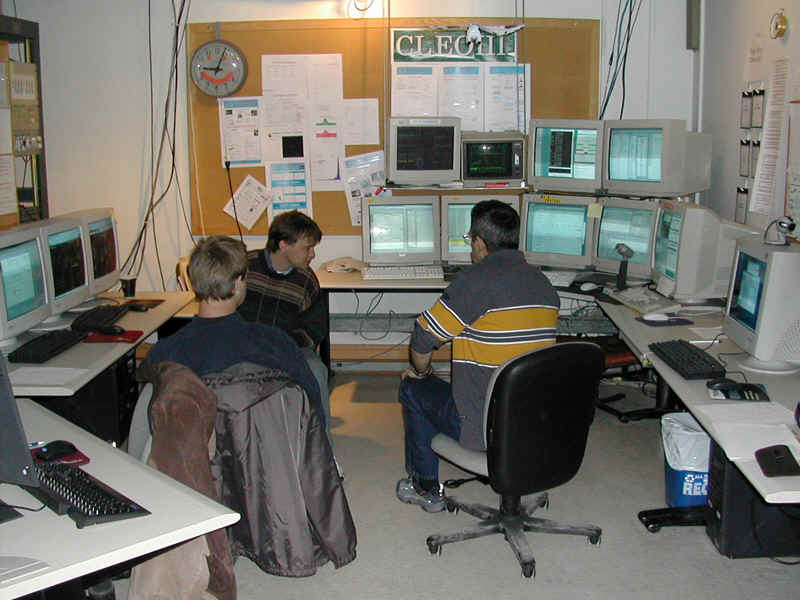
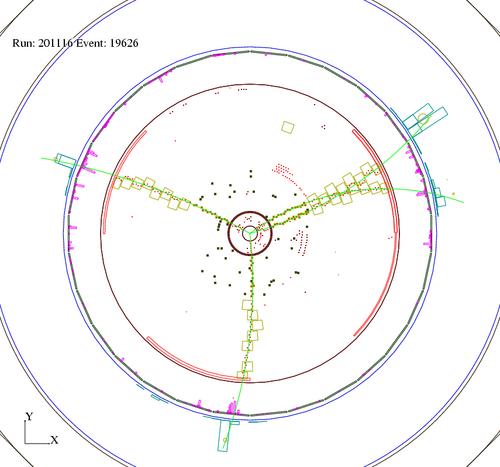
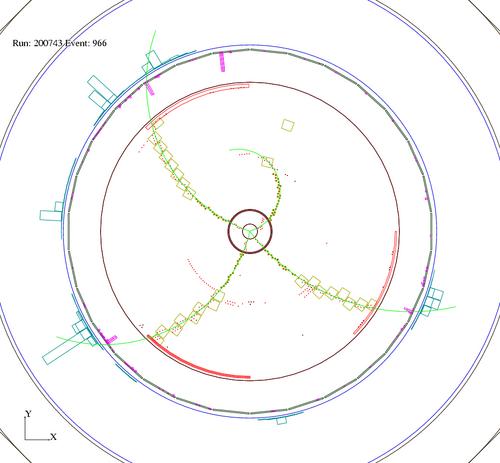
At CLEO, I contributed to several physics, software and hardware projects:
I. Physics Analysis and Software Research Projects -
(a) Developed very sophisticated and complex particle track-reconstruction data analysis software code in UNIX based Fortran using CLEO library functions with data abstraction and modular programming techniques, involving a fast data handling system on DEC Alpha workstations to search for the evidence of new subatomic particles from over 20 million electron-positron collision events collected by the CLEO-II detector at CESR. (b) Took assigned experimental shifts (data acquisition and monitoring). (c) Made filtered data-skims for physics analysis; devised and applied a set of optimal “cuts” (selection criteria) from over 200 distinct detector parameters, including Kalman Filtering routine to improve the signal/noise ratio of the physics process under study and reduced any unwanted background to obtain at least a 4 - 5 sigma standard deviation signal to find the evidence of new subatomic particles. Checked signal events against detector noise and statistical fluctuations. (d) Carried out the simulation tasks (using GEANT Monte Carlo Package) of over 100 million particle decay events to distinguish the signal events from unrelated background using Neural Net concepts to predict the outcome of a specific physics analysis. (e) Created NTUPLEs, plotted histograms and analyzed data events using PAW++ and fitted the plots using MNFIT. (f) Wrote in Fortran, the primary vertex reconstruction software code to detect the L0 Hyperons, the secondary vertex reconstruction software code to detect the X0, X- and W0 Hyperons, and the tertiary vertex reconstruction software code to detect several Charmed Baryons in over 35 different decay modes. (g) Also wrote a robust Pi-Zero veto and Photon finding software code in Fortran for the CLEO Collaboration.
II. Hardware Research Projects -
(a) Along with my research students at the University of Texas - Pan American, we completed a hardware project on the CESR Accelerator’s Superconducting Quadrupole Wiggler Magnets for the CESR-C upgrade. We calibrated the quadropoles correctly so that they worked according to the design plan; these quadrupoles were later installed into the CESR-C storage ring. These quadrupoles play a very important role in focusing the magnets, and if they are not calibrated properly, the beam collision rate would not be as high. This calibration study was a major critical undertaking for the new CESR-C storage ring. Our test results were included in the CESR-C Accelerator Technical Design Report.
(b) As a member of the CLEO-III Silicon Micro-strip (Si3) Detector Team, for the CLEO-III silicon detector upgrade, I worked on the design, construction and implementation of a Silicon Microstrip Tracking Detector system, which included a Silicon plane, SVX Interface Board, CMOS-TTL adapter board, SDA-SRS data acquisition module, the CAMAC Crate and Diagnostic Module assembly, including the implementation of the Beam Definition Counter, NIM based Trigger System, and the Data Readout System using LABVIEW software. I tested over 400 flex circuits for the electrical conductivity of each strip inter-connections at the sub-micron level and sort out any defective flex circuits that had contaminations on pads and had bad channels (open and short channels), using a GPIB based Computer –Aided Signatone S465 Microprobe Station and a custom-made program that was written in LABVIEW. This work was carried out in a Class-1000 Clean Room at SUNY-Albany’s HEP lab. Each of the flex circuits contained about 256 conducting sensor strips made up of an alloy of Copper and Nickel with a Kapton substrate, measuring 2.5 cm in width and 5.2 cm in length, with each of the sensors about 300 mm wide. Resistance measurements were made using a Fluke-2230 Multimeter, which was read out via a GPIB interface card. The probe moved in X and Y to about 0.05 mm (0.05 micron) accuracy. The whole Microprobe Station was enclosed in a protective cover which was used to shield the system electrically, from dust and light. The entire unit was mounted on an anti-vibration table (manufactured by Kinetic Systems) which supports the whole system on a cushion of compressed air.
The Flex circuits were manufactured in collaboration with General Electric’s R&D Center, based on a high density interconnect process. The Flex circuits were plasma cleaned at 150 °C before leaving GE. Some of the flex wire-bonding parameters were revised following our tests. The actual CLEO-III Si3 detector readout electronics, was designed to connect with the silicon microstrip detectors by means of these flex circuits. The Si3 mechanical and electrical design required a flexible connection between the readout strips at each end of the silicon chains and the R/C chip inputs which are on the electronics hybrid circuit. The mechanical layout of the CLEO detector required six different shapes for the flex circuits depending on which layer and end they are used on. The good flex circuits were successfully installed with the RICH readout-modules in the CLEO-III detector in 1999. This work was carried out in collaboration with Purdue University and the University of Oklahoma.
(c) As a member of the CLEO-III Particle-ID system team (i) I built a Cosmic Ray Muon Detector System, which contained a High Resolution Time of Flight (TOF) counter, Aerogel Counter, Muon Counter, and four layers of Silicon-Detectors Planes, with a 2” x 2” defined Virtual Beam Channel. The Aerogel Counter was used as a Threshold Cerenkov Counter, which was half-filled with Aerogel blocks. For better reflection, the inner walls of the Aerogel counter was fitted with Millipore and Kodak glossy paper with aluminized lexan sheets. The Aerogel blocks had a refractive index of 1.02. These Aerogel blocks were obtained from Lawrence Berkeley National Lab. (LBNL). Due to the hygroscopic nature of Aerogel, the ultra-light Aerogel blocks were slightly baked/heated at a high temperature in a delicate manner in a special oven to remove trace amounts of water molecules. (ii) The Cosmic Ray Detector instrumentation contained a High Voltage Power source (~2500 V), 7 Regular Photomultiplier Tubes (of which 1 was a Hamamatsu R2490 PMT, 4 Amperex XP 2230 PMTs and 2 Amperex XP 2020 PMTs), 4 Hamamatsu R2490Q UV PMTs, 6 Scintillator Trigger Counters made of Lucite, a Light Tight Dark Box, a Digital Programmable Oscilloscope, several lead blocks, CAMAC High Precision ADC and TDC units, NIM Discriminators for generating precise logic pulses from analog signals above a set threshold, and a GPIB Crate Controller for computer interfacing. A Scintillator counter connected with a Hamamatsu R2490 PMT placed below several layers of lead blocks, served as the Muon Counter, which blocked all particles except muons. (iii) Carried out coincidence and propagation timing studies of the signal processing modules. (iv) Calibrated and tested each of the counters using cosmic ray muons and brought the Cosmic Ray Detector System online. Fast signals from the TOF (connected with two Amperex XP 2020 PMTs and one Amperex XP 2230 PMT) and the Aerogel Cerenkov Counter (connected with four Hamamatsu R2490Q UV PMTs) were fed as inputs to fast rise-time compensated discriminators and then used to form various trigger coincidence inside the logic modules, all of which were installed in a NIM power crate. The timing and the charge signals were fed to TDC and ADC modules installed in a CAMAC power crate. The CAMAC unit was read using a parallel crate controller. GPIB and parallel crate controllers were used to establish links to a PC system. A PC-based data acquisition system was implemented using LABVIEW for online and off-line cosmic ray muon data analysis. (v) Measured the Timing resolution of the TOF counters. Carried out a detailed study on the number of photoelectrons vs. the thickness of the Aerogel layer using both UV and Regular Photomultiplier Tubes (PMTs). (vi) Co-wrote a new version of the Monte-Carlo Simulation package, GUIDE-7 in UNIX based Fortran on the DEC workstations for Monte-Carlo Simulation studies for the Aerogel Threshold Cerenkov Muon Counter. (vii) For Photoelectron studies, I used a green LED to generate single photoelectron signals from the photomultiplier tubes and the Monte Carlo simulation of the tubes was used to fit the output pulse area distribution. (viii) Carried out Beam Test Analysis of the Aerogel Threshold Cerenkov Counter using four layers of Silicon Detector planes (to determine the position of the incoming beam) at Brookhaven National Lab. (BNL). (ix) Also worked on the design and the geometrical features of the Aerogel cells for the Aerogel Cerenkov Counter system for the CLEO-III Particle-ID system. The experimental test setup of the Counter consisted of a custom-made light tight black box, which was large enough so that all practical sized cells and block designs could be tested. As part of the calibration process, empty cell runs without any Aerogel was made to measure the photon background from the scintillations or Cerenkov radiation from air and the refractive inner walls.
This whole cosmic ray detector system was used as a test setup for Fabrication and Testing a Silica Aerogel Cerenkov Counter System for the proposed CLEO Symmetric B-Factory Particle-ID R&D project. This was a joint project with Southern Methodist University, the University of Oklahoma, and the University of California at San Diego. The final goal of this R&D project was to identify Pions, Kaons, and Protons up to a momentum of 2.8 GeV/c, which is a requirement for particle identification in a symmetric B-Factory operating at the Upsilon (4S). One of our goals was to identify a design in which at least 8 photoelectrons were detected so that less than 1 out 1000 Pions could fake a Kaon over the selected momentum range. The RICH (Ring Imaging Cerenkov Counter) Particle-ID Project from Syracuse University was finally chosen by the CLEO Collaboration as the CLEO-III Particle ID System, instead of the Aerogel Cerenkov Counter.
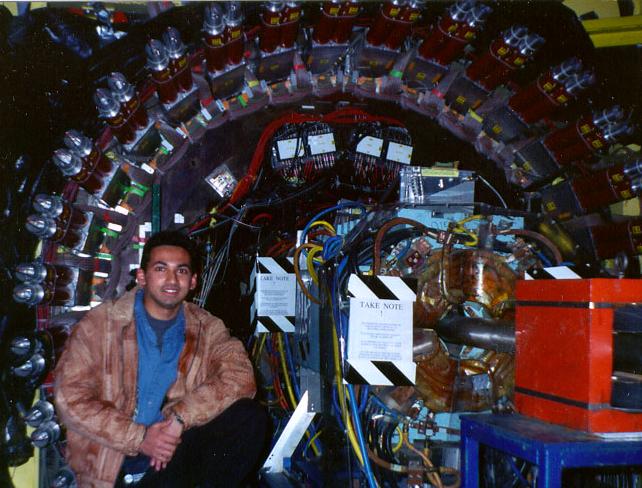
That's me in front of the CLEO Detector in 1998.
A3. Research Activities in Experimental High Energy Physics with the ATLAS Experiment at CERN:
Twenty years of precision tests of this Standard Model have resulted in an enormous number of successful comparisons of data and theory, with no verified departure from the Standard Model. However, current results in HEP hints that new physics, and answers to some of the most profound questions of our times lie at energies around 1 TeV. Despite the successes of the Standard Model, it is widely believed not to be the final word. And despite this impressive predictive power and the successes, we now believe that Standard model is a low-energy approximation to a more general theory, the one that explains our world in its completeness. Although, that the standard model of High Energy Physics has been studied with very high precision over the course of the past two decades without significant deviations, our understanding of the origin of the electroweak symmetry breaking is still incomplete. This arises in large part because the only remaining undetected standard model particle is the SM Higgs boson, which mediates electroweak symmetry breaking in the standard model.
Supersymmetry (SUSY) offers a possible cure for many of the shortcomings of the Standard Model. Space-time symmetries such as those of translation or rotations of coordinates lead to momentum and energy conservation. Supersymmetry postulates a further symmetry between bosons (integer-spin particles) and fermions (half-integer-spin particles), thereby generalizing the Poincare group describing space and time. This radical reshaping of our understanding of space-time is also a key ingredient in the theory of strings in multiple dimensions. When used as a phenomenological ingredient of physics at the scale of present-day experiments, it provides a natural solution to the shortcomings of the SM involving the instability of the mass of the Higgs boson, and permits the unification of the strong and electroweak forces. Supersymmetry predicts that each known fermion and boson should have a mirror "superpartner" of the opposite type. Clearly, supersymmetry is broken, since there is no spin-zero superpartner for the electron at 0.511 MeV. But to be self-consistent, supersymmetry predicts that the superpartners should be found with masses below 1000 GeV, which will be within the reach of discovery at the LHC.
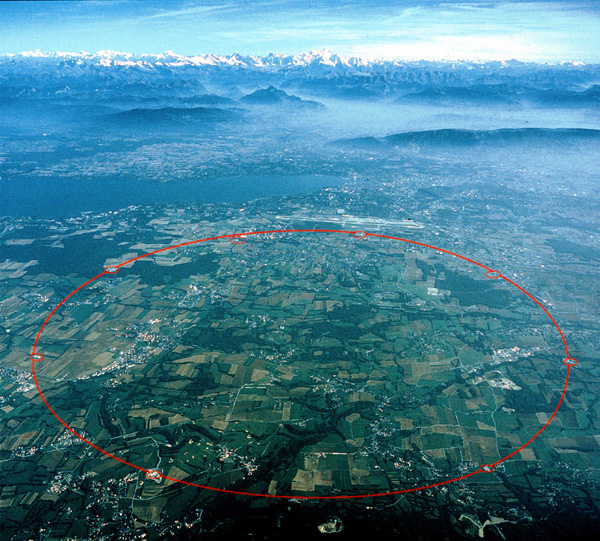
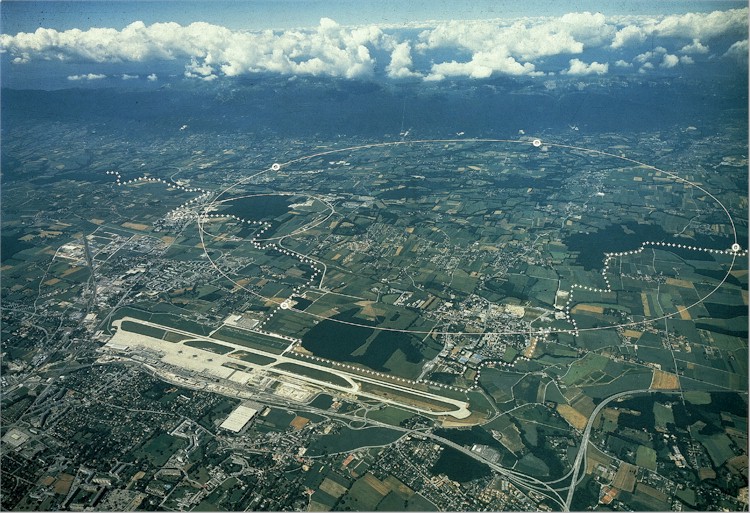
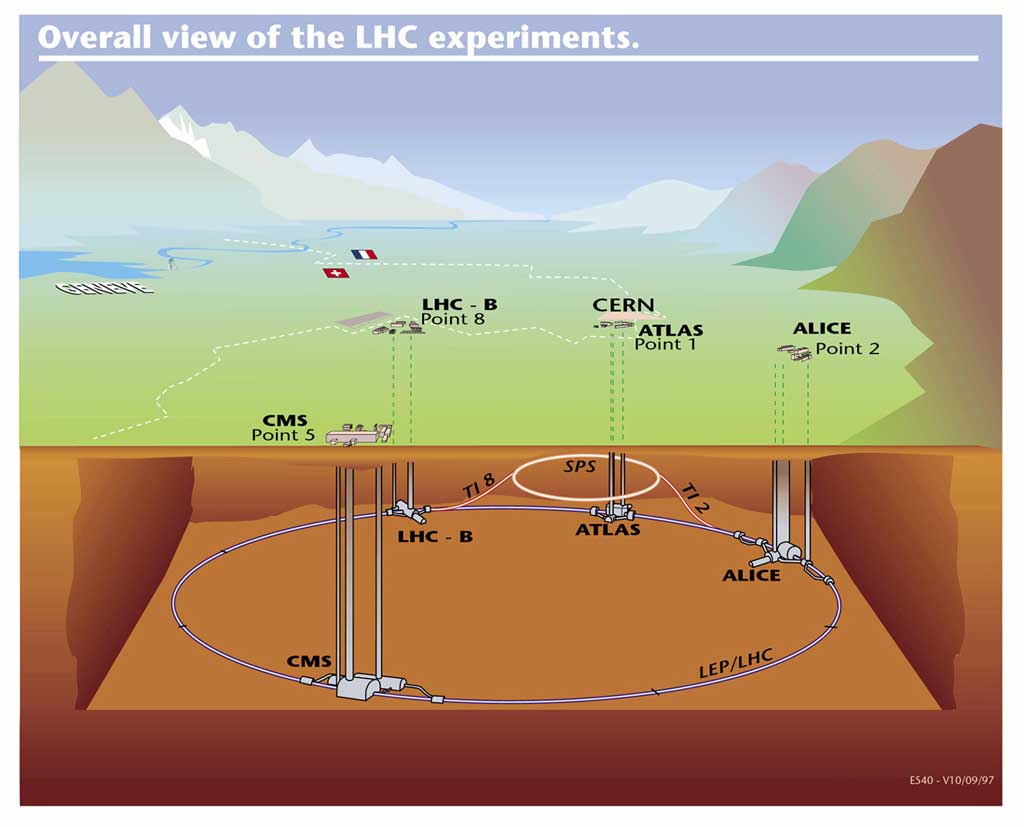
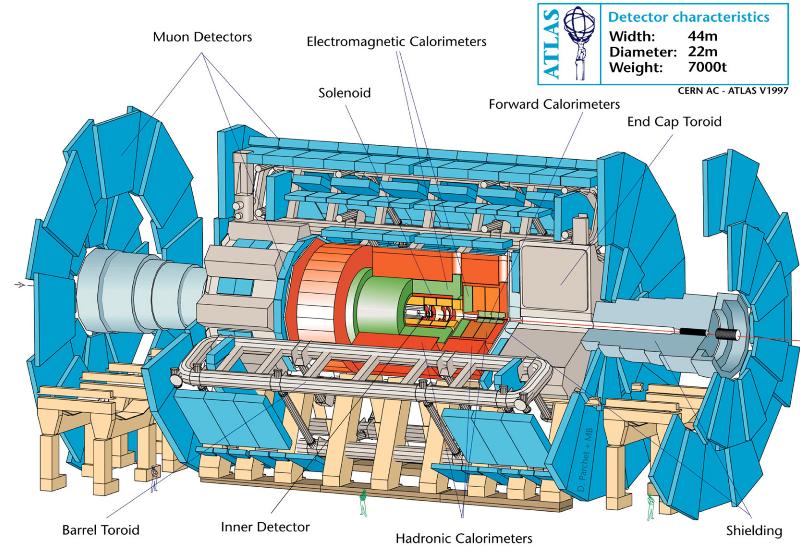
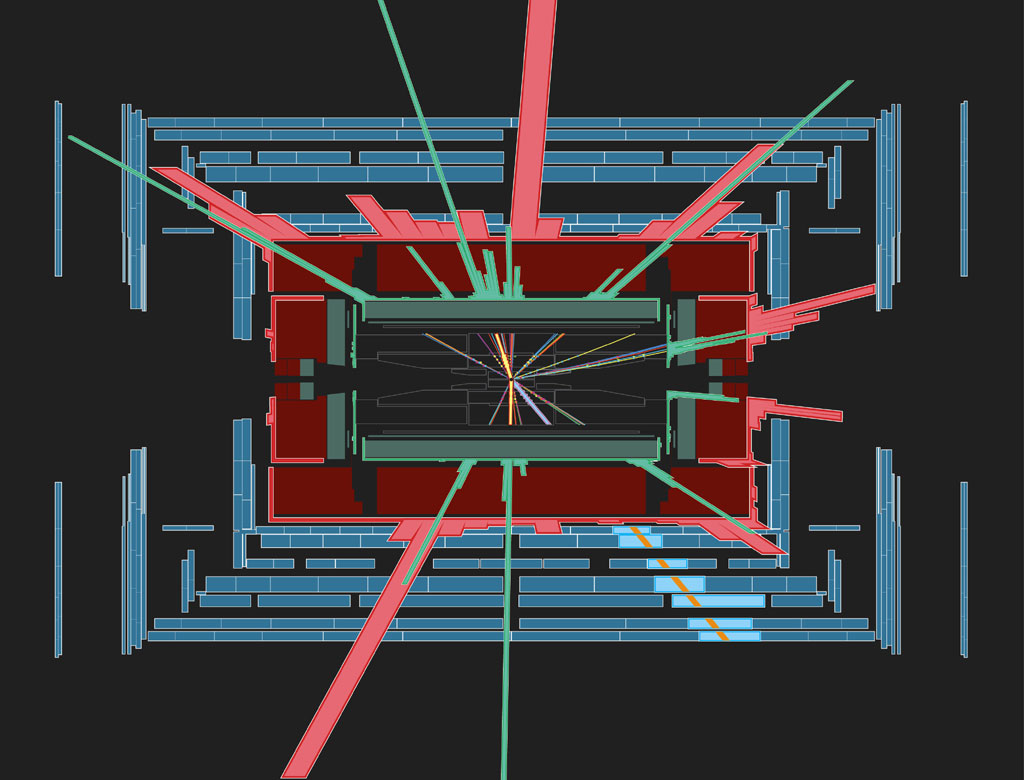
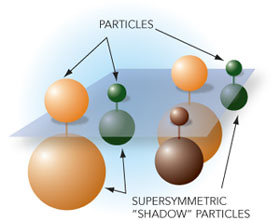
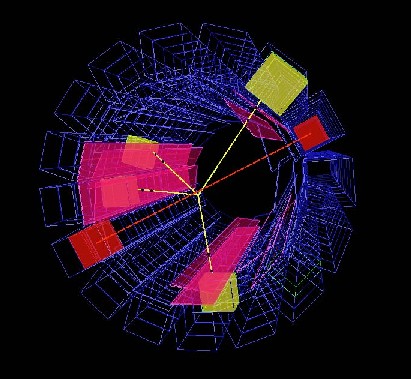
According to SUSY, similar to the quarks and gluons which make up protons, squarks and gluinos should be readily produced, and if it does exist, it ought to be found at LHC. While most squarks are anticipated to be heavy, according to some SUSY models, there could be lighter bottom and top squarks. While it seems like a paradox, according to these SUSY models, the higher masses of bottom and top quarks could lead to smaller masses for their superpartners. The models predict that left and right helicity states of the third generation squarks can have large mixing, leading to one of their masses eigenstates to be substantially lighter that other squarks. These SUSY particles can be produced at LHC, as bottom and anti-bottom squark pairs.
Indeed the next research instrument in HEP that will answer some of the outstanding questions in HEP will be the LHC. There is an almost agreed expectation that the new upcoming experiments in LHC will make the next generation of breakthrough discoveries. Therefore, I am interested in searching for new phenomena at the TeV energy scale. I would like to search for the Higgs at ATLAS (if it is not detected by CDF and DØ by 2007), and new particles that lie beyond the Standard Model at ATLAS. I am interested in the following physics analysis over some 10-15 year period at ATLAS. You can view ATLAS animations by clicking here.
(i) search for the SM Higgs (H0) and the four MSSM Higgs (the scalar h0, the pseudoscalar A0, the two charged scalars, H+ and H-) over the full range of allowed masses.
(ii) search for the lightest neutral supersymmetric particles (LSP), known as the Neutralinos, and the charged LSP, known at the Charginos.
(iii) search for the supersymmetric beauty squark, also known as “sbottom”, and the top squark, known as “stop”.
(iv) search for extra spatial dimensions (3 + n).
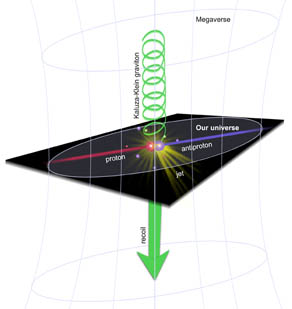
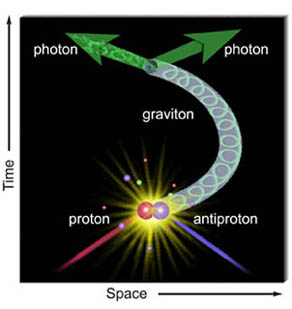
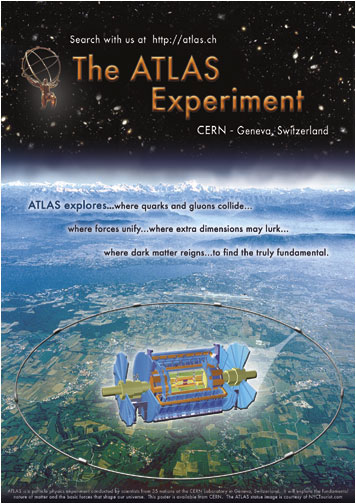

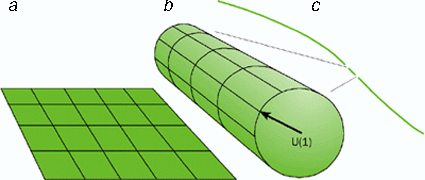
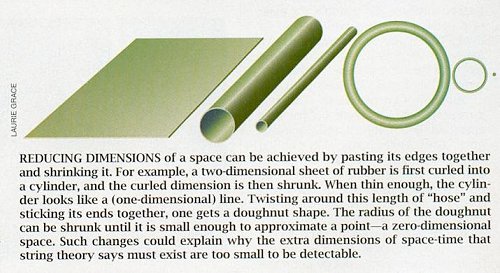
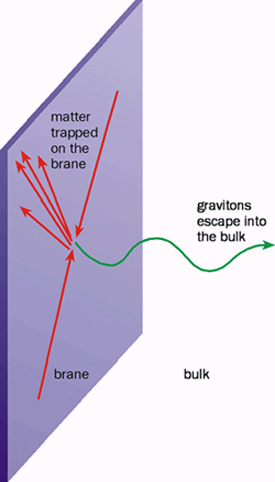
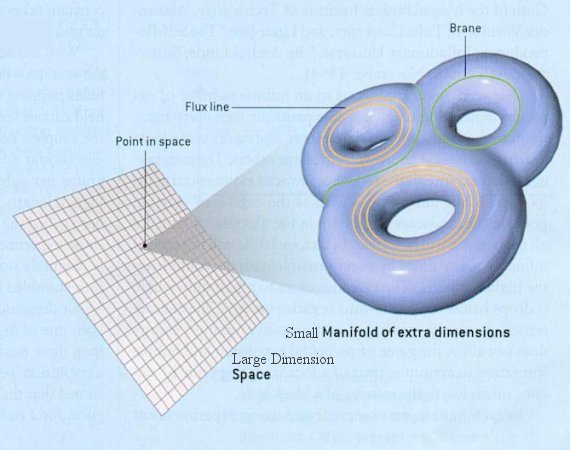
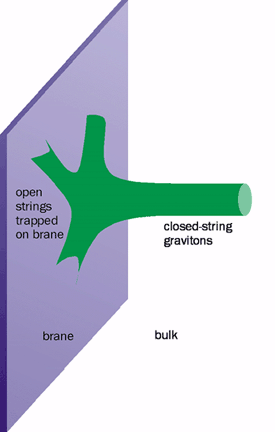
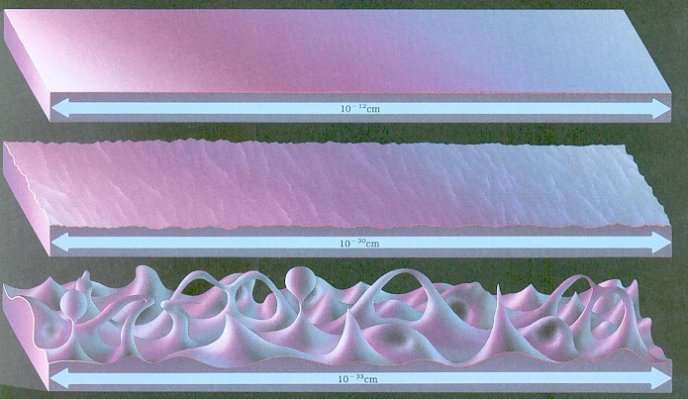
B. RESEARCH IN COMPUTATIONAL SCIENCE (HIGH PERFORMANCE CLUSTER AND GRID COMPUTING):

Although my primary research focus is in Experimental High Energy Physics, I also have a considerable interest in computational physics/science, especially in high performance cluster and grid computing. Computational Physics/Science is an emerging research discipline, uniting ideas in physics, computer science together with applications arising in science and engineering. Because it complements theoretical and experimental investigations, Computational Physics/Science is often referred to as the “third science”.
Nowadays, custom-made Beowulf clusters using PCs are replacing the expensive supercomputers. In fact using a cluster of networked PCs, it is possible to build a supercomputing system that will surpass the floating-point performance of a CRAY Y-MP supercomputer at less than 1/150th the cost. A high performance computing system using a cluster of networked PCs is called a Beowulf Cluster.
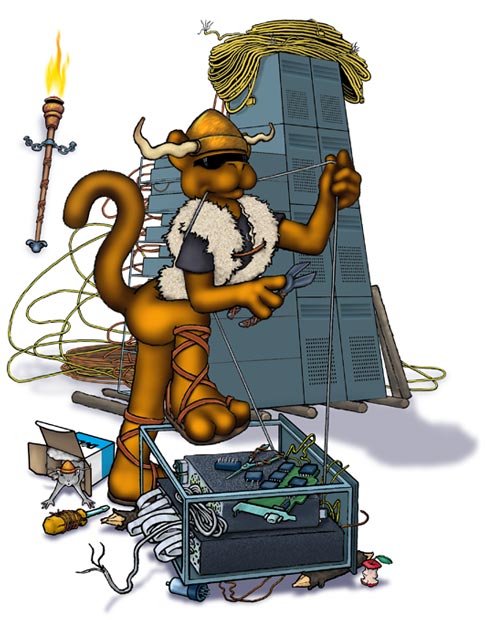

High performance cluster and grid computing is undergoing a fundamental transition. Indeed, accelerator-based High Energy Physics research with its challenges in large-scale computing has pushed computing and computing techniques to the limit. In accelerator-based experiments, by its nature of vast independent collisions, extracting small “rare” signals from enormous backgrounds (event reconstruction of long decay chains) via computationally demanding analyses of large datasets and complex Monte Carlo simulation studies present enormous IT research challenges. Using the Beowulf cluster, we will also be able to train the next generation of students, who will acquire the expertise to pursue careers in IT areas at the intersection of computational physics/science and High Energy Physics.
I was a member of the NSF funded (ITR - Information
Technology Research) national grid projects, GriPhyN (Grid Physics Network) and the IVDGL (International Virtual
Data Grid Laboratory) grid computing project. I am currenly involed with the
national Open Science Grid (OSG) consortium. In 2010, I received a grant from
the NSF in the amount of $200,273 to establish a state-of-the-art 10 Teraflops
51-node (384-core) Tier3 Grid Supercomputing facility with 1.3 TB of distributed
RAM and 375 TB of disk storage space that is linked to the prestigious national
OSG cyberinfrastructure. This is the third largest Super-computing facility in
the state of Kentucky and we are the only institution in Kentucky to be part of
OSG consortium. For more information about the OSG Tier3 supercomputing
facilty, click
here.
Bellarmine University is part of DOSAR (Distributed
Organization for Scientific and Academic Research) Virtual Organizations.
DOSAR is a grid organization that focuses on community and
campus based grids and promotes a wide range of interdisciplinary and
educational activities within the organization and its member institutions.
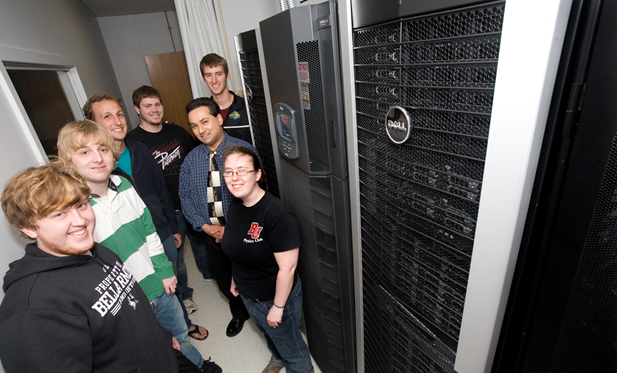
Due to this need for shared data analysis, storage and data access, Grid computing has recently emerged as an important new field, distinguished from conventional distributed computing by its focus on large-scale resource sharing, innovative applications, and, in some cases, high-performance orientation. Grid is a new Information Technology (IT) concept of "Super Internet" for high-performance computing: worldwide collections of high-end resources - such as supercomputers, storage, advanced instruments and immersive environments. These resources and their users are often separated by great distances and connected by high-speed networks. The Grid is expected to bring together geographically and organizationally dispersed computational resources, such as CPUs, storage systems, communication systems, real-time data sources and instruments, human collaborators.
The scientific goals and discovery potential of the large-scale physics experiments will only be realized if efficient worldwide access to the data is made possible. Particle Physicists are thus engaged in large national and international projects that address this massive data challenge, with special emphasis on distributed data access. There is an acute awareness that the ability to analyze data has not kept up with its increased flow. The traditional approach of extracting data subsets, storing them locally, and processing them with home-brewed tools has reached its limits. Something drastically different is required. Indeed, without new modes of data access and of remote collaboration we will not be able to effectively “mine” the intellectual resources represented in our distributed collaborations. Indeed, the management and analysis of the extremely large quantities of data produced by the leading accelerator-based experiments represents an unprecedented information technology challenge. There is a broad realization within these communities that the computational and storage resources needed for data management and analysis cannot realistically be gathered at a single location, and that future computational environments must hence be “Data Grids” - distributed collections of storage systems and compute farms that are operated in a coordinated fashion. The adoption of Grid concepts by this community represents a tremendous endorsement of the technology, but also introduces significant challenges.
Part of the original motivation for grid computing came from the problems in processing scientific data, where the use of dedicated supercomputers is expensive and frequently infeasible. The Grid will allow scientist worldwide to view and analyze the huge amounts of data flowing from experiments in physics, and other areas. Large networks of much cheaper and less powerful processors have long been touted as a natural alternative to such dedicated devices, but there has never been a technology capable of exploiting such distributed computational resources. The aim of grid computing is to provide such technologies.
One of my goals is to enable next generation of scientific exploration, which requires intensive computation and analysis of shared large-scale databases, from hundreds of Terabytes to Petabytes, across widely distributed scientific communities. Given that computational physics/science has emerged, along with experiment and theory, as a "third", complementary, approach to discovery in physics, accelerator-based experiments, whose data collections are expected to reach several Petabytes early in the next decade, the powerful global computing resources available through the IVDGL grid project will enable a new class of data intensive algorithms that will lead to new scientific results.
The Large Hadron Collider (LHC) at CERN produces over 10 petabytes of data will be generated each year per experiment; for the four CERN experiments, the analysis require some 40 petabytes of disk storage per year and the equivalent of 2 million of today's fastest PC processors. This will require a very large and complex computing system. Performing the most rudimentary analysis of these data will probably require the sustained application of some 100 petaflops (floating-point operations per second) of computing power. Thousands if scientists around the world are involved in the LHC experiments, and most of the computing capacity are installed in "Regional Grid Computing Facilities” spread across USA, Europe, and Asia.
LHC has implemented as a computational grid, integrating large distributed computing fabrics into a virtual computing environment. There are many challenging problems to be tackled, including automated computer system management; high performance networking; object database management; security; computational grid middleware; fault-tolerance, and distributed scientific applications. This gigantic cumulated information is analyzed, queried and processed simultaneously by these thousands of researchers in a mostly on-line. The computing capacity necessary to fulfill this tasks is several magnitudes greater than that actually used by the current experiments at CERN. So, the grid cyberinfrastrcutrie has been created to access and integrate grid facilities distributed across the globe
The Figure below shows a hierarchical Computational Grid for High Energy Physics. The DataGrid will provide the solution for storing and processing such huge amounts of data. A multi-tiered, hierarchical computing model will be adopted to share data and computing efforts among multiple institutions. The hierarchy extends over 5 levels, from the large-scale central computing facilities at Tier 0 (e.g. at CERN in Europe) to the national Tier 1 center in the US, to the Tier 2 regional centers, followed by the Tier 3 institutional centers, and finally to the Tier 4 desktops and workstations.
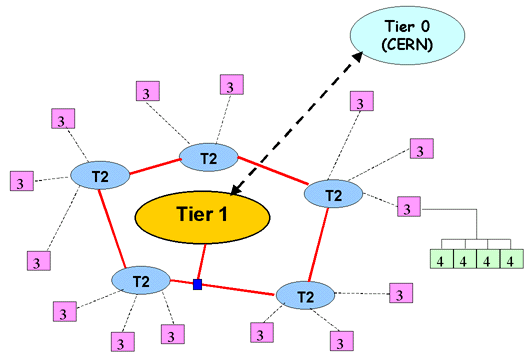




In 2012, I received a grant from NSF in the amount of $209,347 to establish an Advanced Visualization and Computational Lab (AVCL) to enable large-scale visualization of Big Data. Bellarmine was the only university in Kentucky to receive a research instrumentation grant from NSF in 2012. The state-of-the-art Advanced Visualization and Computation Laboratory (AVCL) has been setup with the next generation video-wall technology, called Hiperwall (Highly Interactive Parallelized Display Wall). The lab has a 16 Megapixel 16-ft-wide by 5-ft-high tiled display-wall connected to 9 high-end Tier4 Data Analysis workstations equipped with multi-core dual-NVIDIA graphics cards that provides parallel processing capabilities which will allow the visualization of large datasets with a very high resolution.
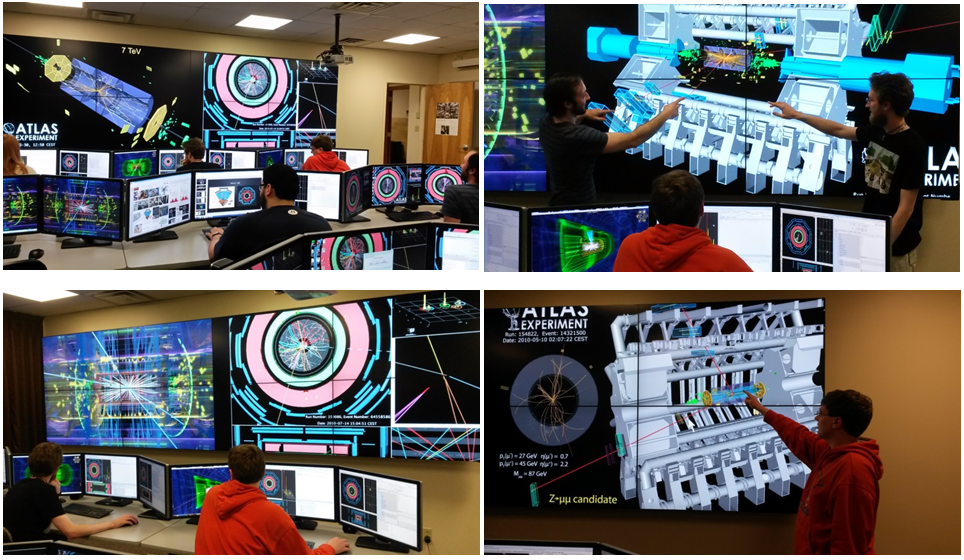
![]() MAJOR PHYSICS CONTRIBUTIONS:
MAJOR PHYSICS CONTRIBUTIONS:
A. NEW PARTICLE DISCOVERIES FROM THE CLEO EXPERIMENT –
![]() Reported a strong evidence of a
ground-state spin 1/2+ charmed-strange baryon Xc+/
(csu) at
CLEO.
Reported a strong evidence of a
ground-state spin 1/2+ charmed-strange baryon Xc+/
(csu) at
CLEO.
![]() Reported a strong evidence of a
ground-state spin 1/2+ charmed-strange baryon Xc0/
(csd) at
CLEO.
Reported a strong evidence of a
ground-state spin 1/2+ charmed-strange baryon Xc0/
(csd) at
CLEO.
![]() Reported a strong evidence of a
ground-state spin 3/2+ charmed-strange baryon
Xc*0
(csd) at
CLEO.
Reported a strong evidence of a
ground-state spin 3/2+ charmed-strange baryon
Xc*0
(csd) at
CLEO.
![]() Reported a strong evidence of a
ground-state spin 3/2+ charmed-strange baryon Xc*+
(csu) at
CLEO.
Reported a strong evidence of a
ground-state spin 3/2+ charmed-strange baryon Xc*+
(csu) at
CLEO.
![]() Reported an evidence of an
orbitally-excited (L=1) spin 1/2-
charmed-strange baryon Xc10
(csd) at
CLEO.
Reported an evidence of an
orbitally-excited (L=1) spin 1/2-
charmed-strange baryon Xc10
(csd) at
CLEO.
![]() Reported an evidence of an
orbitally-excited (L=1) spin 1/2- charmed-strange baryon
Xc1+
(csu) at
CLEO.
Reported an evidence of an
orbitally-excited (L=1) spin 1/2- charmed-strange baryon
Xc1+
(csu) at
CLEO.
![]() Reported an evidence of an
orbitally-excited (L=1) spin 3/2-
charmed-strange baryon Xc1+0(csu) at
CLEO.
Reported an evidence of an
orbitally-excited (L=1) spin 3/2-
charmed-strange baryon Xc1+0(csu) at
CLEO.
![]() Reported an evidence of an
orbitally-excited (L=1) spin 3/2-
charmed-strange baryon Xc10
(csd) at
CLEO.
Reported an evidence of an
orbitally-excited (L=1) spin 3/2-
charmed-strange baryon Xc10
(csd) at
CLEO.
B. PARTICLE THEORY/PHENOMENOLOGY –
![]() Developed
a Periodic Table of
Ground-State Elementary Particles
of Quarks, Leptons, Force Carriers,
Mesons and Baryons. This work was presented as a poster
at the Fall 2001 APS Texas Section Meeting on October 6, 2001 and at the Annual APS Meeting on April 20, 2002 at
Albuquerque, New Mexico. This work received one of the Outstanding APS Research Awards at the
2001 Texas Section APS Meeting.
Developed
a Periodic Table of
Ground-State Elementary Particles
of Quarks, Leptons, Force Carriers,
Mesons and Baryons. This work was presented as a poster
at the Fall 2001 APS Texas Section Meeting on October 6, 2001 and at the Annual APS Meeting on April 20, 2002 at
Albuquerque, New Mexico. This work received one of the Outstanding APS Research Awards at the
2001 Texas Section APS Meeting.
![]() Developed a new SU(N)
Group-Theory Flavor Symmetry Representation of Charm and Beauty Mesons &
Baryons. This work was
presented at the 2000 Annual APS Meeting on May 2, 2000 at Long Beach, CA.
Developed a new SU(N)
Group-Theory Flavor Symmetry Representation of Charm and Beauty Mesons &
Baryons. This work was
presented at the 2000 Annual APS Meeting on May 2, 2000 at Long Beach, CA.
![]() PUBLICATIONS
(CO-AUTHORED PEER-REVIEWED):
PUBLICATIONS
(CO-AUTHORED PEER-REVIEWED):
![]() Number of
peer-reviewed (co-authored) publications: 274
Number of
peer-reviewed (co-authored) publications: 274
![]() A list of my peer-reviewed (co-authored) publications can be found
here.
A list of my peer-reviewed (co-authored) publications can be found
here.
![]() An
up-to-date list of my peer-reviewed (co-authored) publications can be found at the
SPIRES Website.
An
up-to-date list of my peer-reviewed (co-authored) publications can be found at the
SPIRES Website.
![]() You can also view the
CITATIONS
Summary as compiled by
SPIRES.
You can also view the
CITATIONS
Summary as compiled by
SPIRES.
![]() TALKS AND PRESENTATIONS:
TALKS AND PRESENTATIONS:
![]() Total Number of
Talks & Presentations (Including those with Students): 143
Total Number of
Talks & Presentations (Including those with Students): 143
![]() A list of my
talks and presentations can be found
here.
A list of my
talks and presentations can be found
here.
![]() GRANTS AND FUNDING
(EXTERNAL/INTERNAL/MATCHING) FOR RESEARCH & EDUCATION (AMOUNT
RECEIVED- ~$4.6 MILLION):
GRANTS AND FUNDING
(EXTERNAL/INTERNAL/MATCHING) FOR RESEARCH & EDUCATION (AMOUNT
RECEIVED- ~$4.6 MILLION):
*
FUNDED EXTERNAL/INTERNAL GRANTS & FUNDRAISING
ACTIVITIES AT BELLARMINE UNIVERSITY (9/07 – PRESENT)
·
FUNDED
EXTERNAL/INTERNAL GRANTS AT EDINBORO UNIVERSITY OF PENNSYLVANIA
(EUP)
(9/04 – 5/07)
¨
1.
1. Awarded a research grant from the Kentucky-NSF-EPSCoR
Program titled, “Research in High Energy Physics with the
LHC-ATLAS Experiment
at CERN Using the OSG Grid Cyberinfrastructure”,
2013,
(Awarded
$16,541).
(PI) *
2.
Awarded
a research instrumentation grant from the National Science Foundation (NSF)’s
Division of Computer and Network Systems (CNS) program
titled
“MRI:
Acquisition of a High Resolution Visualization System to Enable Large-Scale
Data-Intensive Collaborative Research
and Cyber-Learning using Grid Computing”,
2012 –
2015,
(Awarded
$209,347).
(PI) *
3.
Awarded a grant from
NSF’s S-STEM Program
titled, “Bellarmine
S-STEM Scholars Program”,
2012
–
2017,
(Awarded
$600,000),
This grant also includes an additional
institutional matching amount of $1,605,000.
(Total Project
Amount- 2,005,000)
(PI)
*.
4.
Awarded
a research instrumentation grant from the National Science Foundation (NSF)
titled, “Acquisition
of a Supercomputing Cluster
for Data-Intensive Computational Research Using the Open Science Grid
Cyberinfrastructure”,
2010 – 2012,
(Awarded $200,273).
(PI) *
5.
Awarded
a research grant by NASA’s KSGC program titled,
“Collaborative
Research with JPL’s SIM (Space Interferometry Mission) Project Involving
Students from Bellarmine University”,
2009-2010, (Awarded
$25,000).
(PI)
*
6. Awarded a summer research grant
from the Bellarmine University titled, “Search
for New Subatomic Particles at Stanford Linear Accelerator
Center (SLAC)”,
Summer 2008, (Awarded
$2,500). (PI) *
7.
Received
$5,000 from a Donor to
create the Richard Jelsma Research Funds for the High Energy Physics Research
Program at Bellarmine
University with the ATLAS Experiment at CERN, 2010.
(PI)
*
8.
Received
$10,500 from several
Donors from the Louisville community to enhance the internet bandwidth for
Bellarmine University’s Tier3 Grid
Supercomputer, 2012. (PI)
*
9.
Awarded
a research grant from the Department of Energy (DOE)
titled, “Study of Heavy Flavor Physics Using the
BABAR Detector at SLAC”, at the State University of
New York at Albany. Total amount funded for three years is
$390,000 (2005 - 2008).
(Senior
Personnel).
·
10.
Awarded a research grant from the Faculty Senate
Research Program titled,
“Search for Exotic Particles at the BABAR Experiment at
SLAC
(Stanford Linear Accelerator Center)”,
2006-2007, (Awarded
$2,500).
(PI)
·
11.
Awarded a research grant by the National Science
Foundation (NSF) titled,
“Study of Charmed Baryon Production and
Decays
Using the
BABAR Experiment at SLAC at Stanford University”,
2004-2007, (Awarded
$42,000).
(Co-PI)
·
12.
Awarded a research grant titled, “Grid-Enabled
Research in High Energy Physics”, from the
Pennsylvania State System of Higher Education
(PASSHE) FPDC (Faculty Professional Development Council) Program. 2005 – 2006, (Awarded
$4,824).
(PI)
·
13.
Awarded a research grant from the Faculty Senate
Research Program titled,
“Grid Computing Research with High Energy Physics
Applications”,
2004-2005,
(Awarded
$2,500).
(PI)
·
14.
Awarded $800
as travel money by Edinboro University of Pennsylvania to conduct research
activities in high energy physics at the State
University of New York at Albany, 2006.
·
15.
Awarded $1769
by the University to build a Cosmic Ray Muon Detector at Edinboro University of
Pennsylvania. Additional money was
provided by the Department of Physics and Technology, 2005.
·
16.
Awarded $831
as travel money by Edinboro University of Pennsylvania to
conduct research activities in high energy physics at the State
University of New York at Albany, 2005.
·
17.
Awarded $1200
by Edinboro University of Pennsylvania to present a talk
at the 2005 April APS (American Physical Society) Meeting.
·
18.
Awarded
$3,000
by Edinboro
University of Pennsylvania’s Office of Graduate
Studies and Research for a full-time Graduate Research Assistant
to work on my Cluster/Grid Computing project.
·
19. Awarded
$10,200 by the University as
start-up seed money to build a 8-node Beowulf Cluster for the High Energy
Physics research program at
Edinboro University of Pennsylvania, 2005.
·
20.
A two-year research instrumentation grant titled,
“MRI:
Acquisition of a High Performance Cluster Computer for High Energy Physics and
Grid Computing Research”,
$145,630
was awarded by NSF MRI Program, that included $33,682 in Institutional
matching, 2004. (PI).
¨
NOTE:
I was unable to transfer this grant when I went to
Edinboro University of Pennsylvania in Fall 2004.
21.
Awarded
a research
grant with my student
(Fransisco Alanis), for a minority student to
pursue research in parallel and grid computing in a project titled,
“Research in Grid Computing using a High
Performance Beowulf Cluster”, (Awarded
$3,500
by the NSF’s Louis Stokes Alliance for Minority
Participation Program at UTPA), 2003.
(PI)
¨
22.
A research grant titled,
“Development
of a Computational Model Using a Parallel Beowulf Cluster”,
was funded by the Faculty Research Council (Awarded
$3,500),
2002-2003.
(Co-PI)
¨
23.
Awarded
$2,000
by the Undergraduate Research Scholar’s Program (URSP) for Undergraduate Student
Research in High Energy Physics, 2003. (PI)¨
24.
Equipment Acquisition (16 Pentium-II PCs) from UTPA
Academic Support Services Department for the High Energy Physics Lab. to
construct
a small Beowulf Cluster System for Student Research &
Training, 2002 (Approximate cost of equipment
~$20,000).
(PI)
¨
25. A three–year research grant titled “A Search for Heavy Flavored Baryons and their Decays”, was funded by the Texas Advanced Research Program (ARP), (Awarded $54,000 that included a $10,000 in Institutional Matching), 2000-2002. (PI) ¨
26.
Awarded a supplemental grant by the Texas Advanced
Research Program (ARP) for Research Experience in High Energy Physics for High
School Science Teachers at UTPA, Summer 2001, (Awarded
$8,100),
2001. (PI)
¨
27. Awarded a supplemental grant by the Texas Advanced Research Program (ARP) for Research Experience in High Energy Physics for High School Science Teachers at UTPA, Summer 2000, (Awarded $8,100), 2000. (PI) ¨
28.
A research grant titled,
“High Performance
Cluster and Grid Computing Research with High Energy Physics Applications”,
was funded by the
Faculty Research Council, (Awarded
$3,500),
2002. (PI)
¨
29.
Presidential Research Award (25% Academic-Year One
Course Research Release Time/Semester) to carry out Research & Scholarly
Activities
in High Energy Physics for three years, 2000 –
2003. Approximate monetary equivalent of award –
$39,000. (PI)
¨
30.
Awarded
$750
for an educational proposal titled,
“Development and
Implementation of an on-line Physical Science-II course - PSCI 1422”.
Funded by the Department of Education’s Title-III Grant to
UTPA, Spring 2002.
(PI)
¨
31.
Awarded
$7,008
by the UTPA Provost Scholar’s Fund for an internal research proposal titled,
“Research Support to carry out Research in High
Energy Physics with the CLEO experiment”,
2001-2002. (PI)
¨
32.
Awarded
$30,200
for an educational proposal titled,
“Development and
Implementation of a Physics Graduate Program at UTPA”;
funded by
the UT-System Institutional Enhancement Program, 2001.
(PI)
¨
33.
Awarded
$860
by
the UTPA Faculty Development Council (FDC) Grant program to pursue research
activities in high energy physics at UTPA,
2002. (PI)
¨
34.
Awarded
$1,500
by
the UTPA Faculty Development Council (FDC) Grant program to pursue scholarly
research activities in high energy physics
at UTPA, 2001. (PI)
¨
35. A research grant titled
“Search for Exotic
Particles at CESR-CLEO”,was funded by the
Faculty Research Council,(Awarded
$3,500),2001.(PI)¨
36. A one-year educational grant titled,
“Undergraduate Merit
Scholarships for Hispanic Physics Students”,
was funded by the South Texas Border
Initiative (STBI) Program, (Awarded
$28,000),
2000 – 2001.
(Co-PI)
¨
37. Awarded
$721
for an educational proposal titled,
“Development and Implementation of an on-line Physical Science-I course - PSCI
1421”.
Funded by the Department of Education’s Title-III Grant to
UTPA, Spring 2001.
(PI)
¨
38. Awarded
$721
for an educational proposal titled,
“Development and Implementation of a Web-site for General Physics-I & II courses
– PHYS
1401 and PHYS 1402”.
Funded by the Department of Education’s Title-III
Grant to UTPA, Fall 2000.
(PI)
¨
39. Awarded
$6,307
by the UTPA Provost Scholar’s Fund for an internal research proposal titled,
“Research Support to carry out Research in High
Energy Physics with the CLEO experiment”,
2000-2001.
(PI)
¨
40. Research Funding from the College of Science &
Engineering as part of the Research Excellence Award (Awarded
$2,500), 2000.
(PI)
¨
41. Wrote a HEAF (Higher Education Appropriation Funds)
Proposal along with the Department Chair from the Department of Physics &
Geology
to Request Equipment Money from the UT-System HEAF Funds (Awarded
$11,281).
(Co-PI)
¨
42.
Awarded $7,000
from the Provost Research Fund towards the purchase of a DEC Alpha 600 AU
workstation for High Energy Physics research
at UTPA, 2000. (PI)
¨
43. Equipment Acquisition (six SUN
SPARC-Stations) from UTPA Computer Center for the High Energy Physics Lab. at
UTPA, 2001 (Estimated
cost of equipment
~$30,000).
(PI)
¨
44. A one-year educational grant
titled,
“Undergraduate Merit Scholarships for Hispanic Physics Students”,
was funded by the South Texas Border
Initiative (STBI) Program, (Awarded
$28,000),
1999 – 2000.
(Co-PI)
¨
45.
A research grant titled
“Search for Proton
Decay and a Study of Atmospheric Neutrino Interactions”,
was funded by the Faculty Research
Council, (Awarded
$3,500), 2000.
(Co-PI)
¨
46.
Awarded
$10,000
by the Provost as an Institutional Start-Up Seed Research Grant to set up a High
Energy Physics Laboratory at UTPA, 1999.
(PI)
¨
47.
A research grant titled
“A Study of Charmed
Baryon Spectroscopy and their Decays at CLEO-II Detector”,
was funded by the Faculty Research
Council, (Awarded
$1,800),
1999. (PI)
¨
48.
Awarded a
research grant with my research student, Xavier Rojas, for
a minority student to pursue research in high energy physics in a project
titled,“Search for a Spin-half Charmed-Strange Baryon at
CLEO”,
(Awarded
$6,800
by the NSF’s LSAMP Program at UTPA), 1999.
(PI)¨
49.
Awarded
$3,504
by the UTPA Provost Scholar’s Fund for an internal research proposal titled, “Search for new Subatomic Particles at CLEO”,
1999. (PI)
¨
50.
Awarded
$2,200
as Provost Research Scholar’s Award for an internal research proposal titled,
“Participation of Underrepresented Minority
Students
in High Energy Physics Research with the CLEO
experiment”,
2000. (PI)
¨
51.
Awarded
$1,600
by the Undergraduate Research Scholar’s Program (URSP) for Undergraduate Student
Research in High Energy Physics, 1999. (PI)
¨
52.
Awarded
$500
for an educational proposal titled,
“Student Retention
in Physical Science and General Physics Courses”,
Funded by the
Department of Education’s Title-III Grant to UTPA, Fall 1999.
(PI)
¨



![]() HONORS, AWARDS & ACHIEVEMENTS:
HONORS, AWARDS & ACHIEVEMENTS:
A. AT EDINBORO UNIVERSITY OF PENNSYLVANIA (9/04 – 05/07)
![]() Listed in the 24th
2007 Edition of Marquis Who’s Who in the World.
Listed in the 24th
2007 Edition of Marquis Who’s Who in the World.
![]() Listed in the 1st
Edition of Marquis Who’s Who of Emerging Leaders.
Listed in the 1st
Edition of Marquis Who’s Who of Emerging Leaders.
![]() Listed in the 23rd
2006 Edition of Marquis Who’s Who in the World.
Listed in the 23rd
2006 Edition of Marquis Who’s Who in the World.
![]() Listed in the 22nd
2005 Edition of Marquis Who’s Who in the World.
Listed in the 22nd
2005 Edition of Marquis Who’s Who in the World.
![]() Listed in the 7th
2006 Edition of Marquis Who’s Who in American Education.
Listed in the 7th
2006 Edition of Marquis Who’s Who in American Education.
![]() Certificate of
Recognition for Outstanding Service in the Faculty Tutorial College, Spring
2005.
Certificate of
Recognition for Outstanding Service in the Faculty Tutorial College, Spring
2005.
![]() Certificate of
Recognition for Outstanding Service in the Faculty Tutorial College, Spring
2006.
Certificate of
Recognition for Outstanding Service in the Faculty Tutorial College, Spring
2006.
![]() Certificate of
Recognition for Outstanding Service in the Faculty Tutorial College, Fall
2006.
Certificate of
Recognition for Outstanding Service in the Faculty Tutorial College, Fall
2006.
![]() Certificate of
Recognition for Outstanding Service in the Faculty Tutorial College, Spring
2007.
Certificate of
Recognition for Outstanding Service in the Faculty Tutorial College, Spring
2007.
![]() Certificate of
Election to the University Senate for Representing the Department of Physics &
Technology, Fall 2006.
Certificate of
Election to the University Senate for Representing the Department of Physics &
Technology, Fall 2006.
![]() Nominated for the
2006 Researcher of the Year Award.
Nominated for the
2006 Researcher of the Year Award.
![]() Certificate of
Appreciation for “Exceptional In the Classroom” (presented during the
American Educational Week 2006).
Certificate of
Appreciation for “Exceptional In the Classroom” (presented during the
American Educational Week 2006).
B. AT THE UNIVERSITY OF TEXAS – PAN AMERICAN (9/98-5/04)
![]() Listed in the 58th
2004 Edition of Marquis Who’s Who in America.
Listed in the 58th
2004 Edition of Marquis Who’s Who in America.
![]() Listed in the 21st
2004 Edition of Marquis Who’s Who in the World.
Listed in the 21st
2004 Edition of Marquis Who’s Who in the World.
![]() Certificate of
Appreciation Award for Service Contributions to the University Faculty Senate
from 2000-2004.
Certificate of
Appreciation Award for Service Contributions to the University Faculty Senate
from 2000-2004.
![]() Listed (Honored
Member) in the 2004 Edition of Empire's Who's Who Among Executives and
Professionals.
Listed (Honored
Member) in the 2004 Edition of Empire's Who's Who Among Executives and
Professionals.
![]() Certificate of
Appreciation for Contributions to the Tex-PREP (Texas Pre-Freshman Preparation)
Program at UTPA, 2003.
Certificate of
Appreciation for Contributions to the Tex-PREP (Texas Pre-Freshman Preparation)
Program at UTPA, 2003.
![]() Recipient of the
Vivekananda Award (awarded by the Vivekananda
Foundation of USA),
2003.
Recipient of the
Vivekananda Award (awarded by the Vivekananda
Foundation of USA),
2003.
![]() Listed in the
2003-2004 Edition of Strathmore’s Who’s Who.
Listed in the
2003-2004 Edition of Strathmore’s Who’s Who.
![]() Listed in the 57th
2003 Edition of Marquis Who’s Who in America.
Listed in the 57th
2003 Edition of Marquis Who’s Who in America.
![]() Listed in the 7th
2003 Edition of Marquis Who’s Who in Science & Engineering.
Listed in the 7th
2003 Edition of Marquis Who’s Who in Science & Engineering.
![]() Listed in the 20th
2003 Edition of Marquis Who’s Who in the World.
Listed in the 20th
2003 Edition of Marquis Who’s Who in the World.
![]() Certificate of
Appreciation for Contributions to the UTPA Global Week 2002, 2002
Certificate of
Appreciation for Contributions to the UTPA Global Week 2002, 2002
![]() Listed in the 6th
2002 Edition of Marquis Who’s Who in Science & Engineering.
Listed in the 6th
2002 Edition of Marquis Who’s Who in Science & Engineering.
![]() Listed in the 19th
2002 Edition of Marquis Who’s Who in the World.
Listed in the 19th
2002 Edition of Marquis Who’s Who in the World.
![]() Outstanding
Presentation Award (with my research student) at the 2001Texas Section APS
Conference, 2001.
Outstanding
Presentation Award (with my research student) at the 2001Texas Section APS
Conference, 2001.
![]() Service
Appreciation Award for Contributions at the Pan American Day-2001, 2001.
Service
Appreciation Award for Contributions at the Pan American Day-2001, 2001.
![]() Listed in the 18th
2001Edition of Marquis Who’s Who in the World.
Listed in the 18th
2001Edition of Marquis Who’s Who in the World.
![]() Listed in the
2000 Edition of Lexington Who’s Who.
Listed in the
2000 Edition of Lexington Who’s Who.
![]() Presidential
Research Release-Time Award for Three Years (at University of Texas – Pan
American), 2000.
Presidential
Research Release-Time Award for Three Years (at University of Texas – Pan
American), 2000.
![]() College of
Science & Engineering Research Excellence Award (at University of Texas – Pan
American), 2000.
College of
Science & Engineering Research Excellence Award (at University of Texas – Pan
American), 2000.
![]() Provost Scholar
Award for Outstanding Research Achievement (at University of Texas - Pan
American), 2000.
Provost Scholar
Award for Outstanding Research Achievement (at University of Texas - Pan
American), 2000.
![]() University
Outstanding Faculty Award (at University of Texas – Pan American), 2000.
University
Outstanding Faculty Award (at University of Texas – Pan American), 2000.
![]() Honorary Award
for “Outstanding Contributions to the Understanding of Science”,
presented by the American-Bangladesh Association (at New York), 2000.
Honorary Award
for “Outstanding Contributions to the Understanding of Science”,
presented by the American-Bangladesh Association (at New York), 2000.
![]() Certificate of
Outstanding Academic Achievement as a LSAMP (Louis Stokes Alliance for Minority
Participation) Research Mentor during the 1999-2000 Academic Year.
Certificate of
Outstanding Academic Achievement as a LSAMP (Louis Stokes Alliance for Minority
Participation) Research Mentor during the 1999-2000 Academic Year.
![]() Listed in the
2000 Edition of Lexington Who’s Who.
Listed in the
2000 Edition of Lexington Who’s Who.
![]() Listed in the
2000 Edition of International’s Who’s Who of Professionals.
Listed in the
2000 Edition of International’s Who’s Who of Professionals.
![]() Elected
full-member of Sigma Xi - “for the discovery of several Charmed-Strange
Baryons at CESR-CLEO II”, 1999.
Elected
full-member of Sigma Xi - “for the discovery of several Charmed-Strange
Baryons at CESR-CLEO II”, 1999.
C. AT STATE UNIVERSITY OF NEW YORK AT ALBANY (9/93 – 8/98)
![]() Discovered
several new subatomic particles, collectively known as Charmed-Strange Baryons
(which existed around 10-6 s after Big Bang).
Discovered
several new subatomic particles, collectively known as Charmed-Strange Baryons
(which existed around 10-6 s after Big Bang).
![]() Recipient of
Departmental Teaching
Assistantship and Tuition Scholarship (at SUNY-Albany) - 9/93 to 5/98.
Recipient of
Departmental Teaching
Assistantship and Tuition Scholarship (at SUNY-Albany) - 9/93 to 5/98.
![]() Recipient of
Departmental Research
Assistantship (at SUNY-Albany) - 5/94 to 8/94, 5/95 to 8/95, 5/96 to 8/96, 5/97
to 8/98.
Recipient of
Departmental Research
Assistantship (at SUNY-Albany) - 5/94 to 8/94, 5/95 to 8/95, 5/96 to 8/96, 5/97
to 8/98.
![]() Nominated twice
for the Luther C. Andrews Outstanding TA of the Year Award (at SUNY-Albany)-
1994, 1995.
Nominated twice
for the Luther C. Andrews Outstanding TA of the Year Award (at SUNY-Albany)-
1994, 1995.
D. AT INDIANA UNIVERSITY OF PENNSYLVANIA (1/93 – 8/93)
![]() Recipient of
Departmental Graduate
Assistantship - 1/93 to 8/93.
Recipient of
Departmental Graduate
Assistantship - 1/93 to 8/93.
![]() Recipient of Research
Assistantship (Office of International Services) - 1/93 to 5/93.
Recipient of Research
Assistantship (Office of International Services) - 1/93 to 5/93.
E. AT EDINBORO UNIVERSITY OF PENNSYLVANIA (8/89 – 12/92)
![]() Consistently
named to the University Dean's List - 1990
to 1993.
Consistently
named to the University Dean's List - 1990
to 1993.
![]() Graduated Summa
Cum Laude in Honors curriculum, 1992.
Graduated Summa
Cum Laude in Honors curriculum, 1992.
![]() Secured the top
position in computer science among the graduating class of 1992.
Secured the top
position in computer science among the graduating class of 1992.
![]() International
Student Merit Scholarship - 1989 to 1992.
International
Student Merit Scholarship - 1989 to 1992.
![]() The National
Dean's List Certificate of Merit, 1991 & 1992.
The National
Dean's List Certificate of Merit, 1991 & 1992.
![]() Who's Who Among
International Students In American Universities & Colleges, 1991.
Who's Who Among
International Students In American Universities & Colleges, 1991.
![]() Who's Who Among
Students In American Universities & Colleges, 1992.
Who's Who Among
Students In American Universities & Colleges, 1992.
![]() Who's Who Among
International Scholars In North America, 1992.
Who's Who Among
International Scholars In North America, 1992.
![]() EUP Honors Study
Abroad Scholarship to study at Oxford University,1991.
EUP Honors Study
Abroad Scholarship to study at Oxford University,1991.
![]() Certificate of
Achievement in Recognition for High Achievements in Computer Science, 1992.
Certificate of
Achievement in Recognition for High Achievements in Computer Science, 1992.
![]() Presidential
Honors Scholar, Academic Honors Convocation, 1990 to 1992.
Presidential
Honors Scholar, Academic Honors Convocation, 1990 to 1992.
![]() Honors
Convocation Certificate for High Academic Excellence, 1991 & 1992.
Honors
Convocation Certificate for High Academic Excellence, 1991 & 1992.
![]() Pi Mu Epsilon
Certificate of Recognition for Superior Achievement in Mathematics, 1991.
Pi Mu Epsilon
Certificate of Recognition for Superior Achievement in Mathematics, 1991.
![]() Certificate of
Achievement at the 1992 Annual PACISE National Programming Contest.
Certificate of
Achievement at the 1992 Annual PACISE National Programming Contest.
![]() Member of the
University's Programming Team, 1990 to 1992.
Member of the
University's Programming Team, 1990 to 1992.
F. AT CHRIST’S COLLEGE (ENGLAND) (9/82 – 6/87)
![]() Recipient of a
World Bank 5-year Study Abroad Scholarship to pursue ‘O’ and ‘A’ Level studies
in England, 1982 to 1987
Recipient of a
World Bank 5-year Study Abroad Scholarship to pursue ‘O’ and ‘A’ Level studies
in England, 1982 to 1987
![]() Co-Recipient of
the Annual Science Award, 1986
Co-Recipient of
the Annual Science Award, 1986
![]() Recipient of the
Meyer Prize for Outstanding Proficiency in Physics, 1984
Recipient of the
Meyer Prize for Outstanding Proficiency in Physics, 1984
![]() Recipient of the
Board of Governor’s Merit Scholarship, 1985 to
1987
Recipient of the
Board of Governor’s Merit Scholarship, 1985 to
1987
![]() Merit Certificate
for Proficiency in Mathematics and Biology, 1985
Merit Certificate
for Proficiency in Mathematics and Biology, 1985
![]() Merit Certificate
for Proficiency in All Round Effort, 1985
Merit Certificate
for Proficiency in All Round Effort, 1985
![]() A Prize
Certificate for Outstanding Contribution to College Community Service, 1985
A Prize
Certificate for Outstanding Contribution to College Community Service, 1985
![]() LIST OF STUDENT RESEARCH PROJECTS
SUPERVISED AT BELLARMINE UNIVERSITY (2007 - PRESENT):
LIST OF STUDENT RESEARCH PROJECTS
SUPERVISED AT BELLARMINE UNIVERSITY (2007 - PRESENT):
1. Project Title: “Measurement of Muon Flux and Muon Decay Rate Using the Bellarmine Muon Detector”. Research project of Ben Draper, Richard Jelsma, and Yan Chen. The results will be presented at the KAPT (Kentucky Academy of Physics Teachers) meeting scheduled to be held at BU on Match 7th, 2008.
2. Project Title: “Mass Spectroscopy of Double-Charm and Beauty Baryons”. Research project of Ben Draper, Richard Jelsma, and Yan Chen. The results will be presented at the KAPT (Kentucky Academy of Physics Teachers) meeting scheduled to be held at BU on Match 7th, 2008. Under my supervision, the students developed a mass-model using gluon-energy to predict the mass of all the double-charm and beauty baryons that has not yet been discovered.
3. Project Title: “A Survey of Subatomic Particles with Charmed Quark”. Research project of Zachary Kemper (Physics minor). He presented his results at the 2008 Celebration of Undergraduate Research Week.
![]() LIST OF STUDENT RESEARCH PROJECTS
SUPERVISED AT EDINBORO UNIV. OF PENNSYLVANIA (2004 - 2007):
LIST OF STUDENT RESEARCH PROJECTS
SUPERVISED AT EDINBORO UNIV. OF PENNSYLVANIA (2004 - 2007):
1. Project Title: “Mass Spectroscopy Model of Charmed Baryons”. Undergraduate research project of Jack Dougherty (physics major) at the Department of Physics & Technology. Mentor. (Fall 2006 – Spring 2007).
2. Project Title: “Independent Study on Computational Physics using a High Performance Cluster Computer”. Undergraduate research project of Brendan Rebo (physics major) at the Department of Physics & Tech.. Mentor. (Fall 2006 – Spring 2007).
3. Project Title: “Independent Study on Computational Physics using a High Performance Cluster Computer”. Undergraduate research project of Ryan Maloney (physics major) at the Department of Physics & Technology. Mentor. (Fall 2006 – Spring 2007).
4. Project Title: “Independent Study on Computational Physics using a High Performance Cluster Computer”. Undergraduate research project of Christopher Pollitt (physics major) at the Department of Physics & Technology. Mentor. (Fall 2006 – Spring 2007).
5. Project Title: “SU(N) Flavor Symmetry Classification of Light and Heavy Baryons”. Undergraduate research project of Jack Dougherty (physics major) at the Department of Physics & Technology. Mentor. (Fall 2004 - Spring 2005).
6. Project Title: “Implementation of a Grid-Enabled Beowulf Supercomputing Cluster on the Open-Science Grid (OSG)”. Graduate Research project of Saiful Ahsan (IT major) at the Department of Physics & Technology. Mentor. (Fall 2005 – Summer 2006).
7. Project Title: “Independent Study on High Performance Parallel Cluster Computing”. Undergraduate research project of James O’Kane (physics major) at the Department of Physics & Technology. Mentor. (Fall 2005).
8. Project Title: “Independent Study on High Performance Parallel Cluster Computing”. Undergraduate research project of Jonathan Schweichler (physics major) at the Department of Physics & Technology. Mentor. (Fall 2005 – Summer 2006).
9. Project Title: “Independent Study on Beowulf Supercomputing Cluster”. Undergraduate research project of Shawn Tulenko (physics major) at the Department of Physics & Technology. Mentor. (Spring 2005).
10. Project Title: “Independent Study on Beowulf Supercomputing Cluster”. Undergraduate research project of Jason Mucio (physics major) at the Department of Physics & Technology. Mentor. (Spring 2005).
11. Project Title: “Independent Study on High Performance Parallel Cluster Computing with Physics Applications”. Research project of Saiful Ahsan (graduate IT major) at the Department of Physics & Technology. Mentor. (Spring 2005)
![]() COMMITTEE MEMBER
ON INDEPENDENT STUDY PROJECTS AT EDINBORO UNIV. OF PENNSYLVANIA (2004 -
PRESENT):
COMMITTEE MEMBER
ON INDEPENDENT STUDY PROJECTS AT EDINBORO UNIV. OF PENNSYLVANIA (2004 -
PRESENT):
1. “Independent Study on the Production, Properties and Uses of X-Rays”. Independent Study project of Christopher Bala (physics major) at the Department of Physics & Technology. Committee Member. (Fall 2004).
2. “Independent Study on the Production, Properties and Uses of X-Rays”. Independent Study project of William Purcel (physics major) at the Department of Physics & Technology. Committee Member. (Fall 2004).
3. “Independent Study on Manufacturing Engineering Technology”. Independent Study project of David Meade (MET major) at the Department of Physics & Technology. Committee Member. (Fall 2006).
4. “Independent Study on Manufacturing Engineering Technology”. Independent Study project of Ryan Sweeney (MET major) at the Department of Physics & Technology. Committee Member. (Fall 2006)
5. “Independent Study on Manufacturing Engineering Technology”. Independent Study project of Aaron Lewandowski (MET major) at the Department of Physics & Technology. Committee Member. (Fall 2006)
![]() LIST OF
UNPUBLISHED RESEARCH PAPERS AND MANUALS CO-AUTHORED WITH MY RESEARCH STUDENTS AT
EDINBORO UNIVERSITY OF PENNSYLVANIA (2005 - 2007):
LIST OF
UNPUBLISHED RESEARCH PAPERS AND MANUALS CO-AUTHORED WITH MY RESEARCH STUDENTS AT
EDINBORO UNIVERSITY OF PENNSYLVANIA (2005 - 2007):
1. Saiful Ahsan and Akhtar Mahmood, “The SPHINX-2 Beowulf Cluster Manual Using the Linux Fedora-Core 3 OS”, May 2006, Dept. of Physics & Technology, EUP
2. Saiful Ahsan and Akhtar Mahmood, “How to Build a Beowulf Cluster Using the Linux Red-Hat-7.3 and LAM-MPI”, August 2005, Dept. of Physics & Technology, EUP.
![]() DOCTORAL (Ph.D.)
THESIS COMMITTEE MEMBER AT THE STATE UNIVERSITY OF NEW YORK AT ALBANY (2004 –
PRESENT):
DOCTORAL (Ph.D.)
THESIS COMMITTEE MEMBER AT THE STATE UNIVERSITY OF NEW YORK AT ALBANY (2004 –
PRESENT):
1. Ph.D Thesis Title: “Search for Orbitally Excited Charmed Baryons”. Ph.D. Thesis Committee Member of Bin Pan at SUNY-Albany, Fall 2007.
2. Ph.D Thesis Title: “Study of Charmed Baryons at the BABAR Experiment”. Ph.D. Thesis Committee Member of Shamona Ahmed at SUNY-Albany, Summer 2006.
3. Ph.D Thesis Title: “Measurements of Mass, Intrinsic Width and Branching Fractions of L Decay Modes in the BABAR Experiment”. Ph.D. Thesis Committee Member of Samya Zain at SUNY-Albany, Summer 2006.
4. Served on the Oral Ph.D. Candidacy Examination Committee of Hassan Mahmood at SUNY-Albany, Spring 2008.
5. Served on the Oral Ph.D. Candidacy Examination Committee of Rahmi Bula at SUNY-Albany, Spring 2005.
![]() THESIS
SUPERVISED AT THE UNIVERSITY OF TEXAS – PAN AMERICAN (1999 - 2004):
THESIS
SUPERVISED AT THE UNIVERSITY OF TEXAS – PAN AMERICAN (1999 - 2004):
1. Xavier Garcia Rojas (Chair of the Honors Thesis Committee) – Thesis Title: “Confirmation of the Xc+/ Charmed Baryon in the X+p+p- Decay Mode using the CLEO-II Dataset”, Spring 2000.
2. Anthony Martinez (Chair of the Honors Thesis Committee) – Thesis Title: “Confirmation of the Xc0/ Charmed Baryon in the X0p+p0 Decay Mode using the CLEO-II Dataset”, Spring 2000.
3. Ida Trevino (Chair of the Honors Thesis Committee) – Thesis Title: “A New Flavor Symmetry Representation of Charm and Beauty Mesons & Baryons”, Fall 2001.
4. Allan Figueroa (Computer Science Masters Project) - Thesis titled: “Parallel Event Reconstruction of High Energy Physics Data Using Message-Passing Interface”, December 2002.
![]() OUTREACH ACTIVITIES (LIST OF HIGH
SCHOOL STUDENT RESEARCH PROJECTS
SUPERVISED AT BELLARMINE UNIVERSITY (2007 - PRESENT):
OUTREACH ACTIVITIES (LIST OF HIGH
SCHOOL STUDENT RESEARCH PROJECTS
SUPERVISED AT BELLARMINE UNIVERSITY (2007 - PRESENT):
1. Supervised a research project titled, “Measurement of Muon Flux and Muon Decay Rate Using a High Resolution Muon Detector”, of two DuPont Manual students, Leah Wilson and Lori Wilson. Data was collected both a Bellarmine and at the National City Tower in downtown Louisville. The students wrote a 25 page research report that described their results. This work is a continuation of last year’s project where the students built a Cloud Chamber to detect muon tracks and measure the muon flux. The students won First Prize at the Junior Science and Humanities Symposia (JSHS) held at Louisville on February, 16, 2009.
2. Supervised a research project titled, “Detection of Cosmic Ray Muon Tracks Using a Cloud Chamber” of two DuPont Manual students, Leah Wilson and Abby Reinhart. The tasks included the instrumentation design, the actual construction of the Cloud chamber and tracking and detection of the cosmic ray muon tracks. A DVD was made that documented the entire data taking process. The students wrote a 30-page research paper and made a poster presentation. They won second prize at the Regional Science Fair at Louisville in 2008 and a First prize both at the Junior KAS (Kentucky Academy of Sciences) Student Research competition (held at the University of Kentucky) in 2008 and the Kentucky State Science Fair (held at Eastern Kentucky University) in 2008. Eventually, this project was selected among a handful of projects from Kentucky for the Intel International Science Fair/Competition held in Summer of 2008 in Atlanta, Georgia.
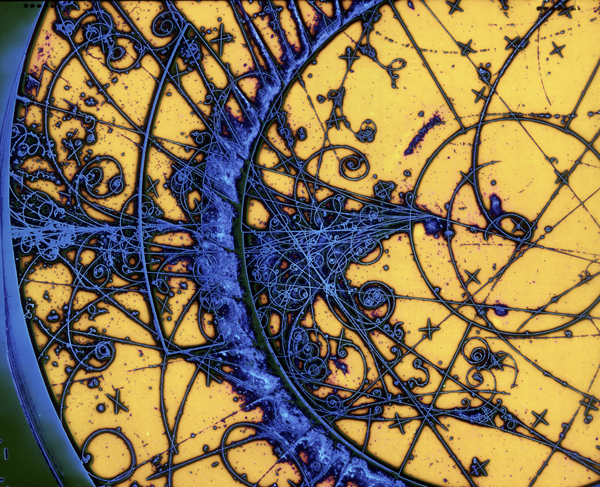
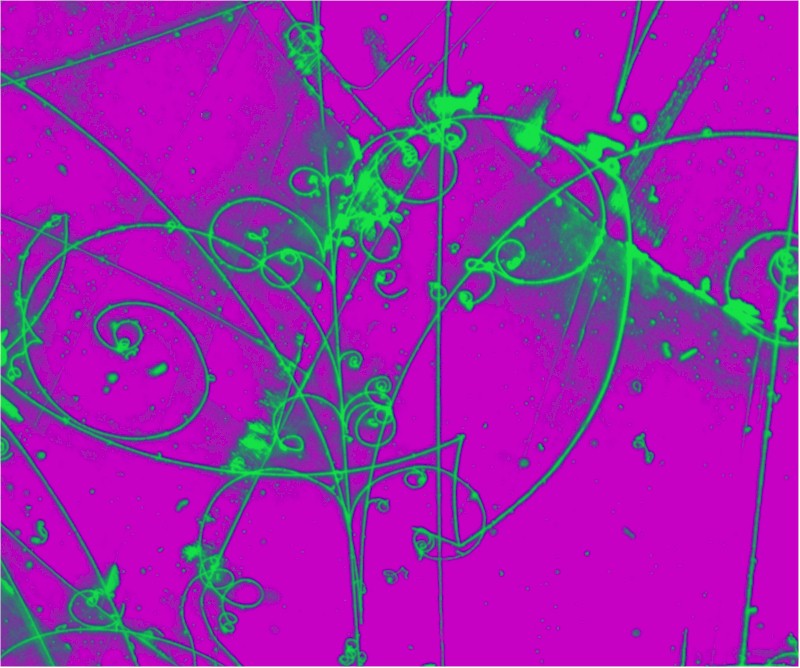
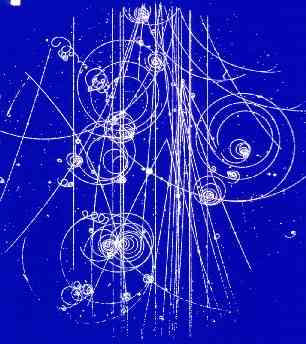
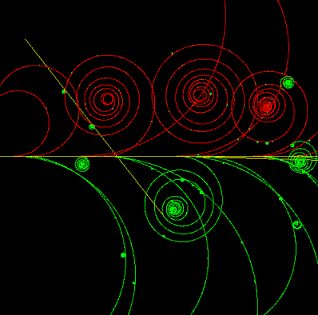


![]() MEMBERSHIPS IN HIGH ENERGY PHYSICS AND GRID COMPUTING RESEARCH COLLABORATIONS:
MEMBERSHIPS IN HIGH ENERGY PHYSICS AND GRID COMPUTING RESEARCH COLLABORATIONS:
![]() Member of the LHC-ATLAS
Scientific Collaboration at CERN (European Center for Particle Research) - (1998
to Present)
Member of the LHC-ATLAS
Scientific Collaboration at CERN (European Center for Particle Research) - (1998
to Present)
![]() Member of the
BABAR Scientific Collaboration in High Energy Physics at SLAC (at Stanford
Linear Accelerator Center) - (2005 to Present)
Member of the
BABAR Scientific Collaboration in High Energy Physics at SLAC (at Stanford
Linear Accelerator Center) - (2005 to Present)
![]() Member of the
CLEO Scientific Collaboration in High Energy Physics at CESR (at Cornell
University) - (1993 – 2005).
Member of the
CLEO Scientific Collaboration in High Energy Physics at CESR (at Cornell
University) - (1993 – 2005).
![]() Member of the
GriPhyN (Grid Physics Network) Grid Computing Collaboration - (2002 to Present).
Member of the
GriPhyN (Grid Physics Network) Grid Computing Collaboration - (2002 to Present).
![]() Member of the
IVDGL (International Virtual Data Grid) Grid Computing Collaboration - (2002 to
Present).
Member of the
IVDGL (International Virtual Data Grid) Grid Computing Collaboration - (2002 to
Present).
![]() PROFESSIONAL MEMBERSHIPS:
PROFESSIONAL MEMBERSHIPS:
![]() Member of
Kentucky Academy of Sciences (KAS) - (2007 to Present).
Member of
Kentucky Academy of Sciences (KAS) - (2007 to Present).
![]() Member of
Kentucky Association of Physics Teachers (KAPT) - (2008 to Present).
Member of
Kentucky Association of Physics Teachers (KAPT) - (2008 to Present).
![]() Elected
Full-Member of Sigma-Xi International Scientific Research Society - (1998 to
Present).
Elected
Full-Member of Sigma-Xi International Scientific Research Society - (1998 to
Present).
![]() Elected Member of
New York Academy of Sciences - (1999 to Present).
Elected Member of
New York Academy of Sciences - (1999 to Present).
![]() Member of ACM
(Association for Computing Machinery) - (2006 to Present).
Member of ACM
(Association for Computing Machinery) - (2006 to Present).
![]() Member of the
Council on Undergraduate Research (CUR) - (2006 to Present).
Member of the
Council on Undergraduate Research (CUR) - (2006 to Present).
![]() Member of the
American Physical Society (APS) - (1995 to Present).
Member of the
American Physical Society (APS) - (1995 to Present).
![]() Member of the APS
Division of Particles and Fields - (1998 to Present).
Member of the APS
Division of Particles and Fields - (1998 to Present).
![]() Member of
Western-Pennsylvania Section of AAPT (American Association of Physics Teachers)
- (2004 to 2007)
Member of
Western-Pennsylvania Section of AAPT (American Association of Physics Teachers)
- (2004 to 2007)
![]() Member of
Committee on Technology Education of Northwestern Pennsylvania - (2004 to
Present)
Member of
Committee on Technology Education of Northwestern Pennsylvania - (2004 to
Present)
![]() Past Member of
the Rio Grande Valley Science Association - (1998 – 2004).
Past Member of
the Rio Grande Valley Science Association - (1998 – 2004).
![]() Past Member of
the American Association for the Advancement of Science (AAAS) - (1998 – 2004).
Past Member of
the American Association for the Advancement of Science (AAAS) - (1998 – 2004).
![]() Past Member of
Texas Faculty Association (TFA) - (2001– 2004).
Past Member of
Texas Faculty Association (TFA) - (2001– 2004).
![]() Elected Member of
Phi Kappa Phi – National Academic Honor Society - (Inactive).
Elected Member of
Phi Kappa Phi – National Academic Honor Society - (Inactive).
![]() Elected Member of
Pi Mu Epsilon - National Honorary Mathematics Society- (Inactive).
Elected Member of
Pi Mu Epsilon - National Honorary Mathematics Society- (Inactive).
![]() Elected Member of
Alpha Chi - National College Honor Society - (Inactive).
Elected Member of
Alpha Chi - National College Honor Society - (Inactive).
![]() PROFESSIONAL COMMITTEES SERVED:
PROFESSIONAL COMMITTEES SERVED:
![]() Currently
serving as the President of KAPT - (09/08 - Present).
Currently
serving as the President of KAPT - (09/08 - Present).
![]() Currently
serving as a Section Chair of the Physics & Astronomy Section of the Kentucky
Academy of Sciences (KAS) - (09/08 - Present).
Currently
serving as a Section Chair of the Physics & Astronomy Section of the Kentucky
Academy of Sciences (KAS) - (09/08 - Present).
![]() Appointed Member
of the Research Board of Advisors of the American Biographical Institute - (2004
to Present).
Appointed Member
of the Research Board of Advisors of the American Biographical Institute - (2004
to Present).
![]() Member of Trustee
Board & Executive Committee of the Vivekananda
Study and Philanthropic Center of
the Vivekananda Foundation of USA - (2002 to Present).
Member of Trustee
Board & Executive Committee of the Vivekananda
Study and Philanthropic Center of
the Vivekananda Foundation of USA - (2002 to Present).
![]() Member of the
Education & Outreach Team of the NSF sponsored GriPhyN/iVDGL Grid Computing Project
- (2002 to 2005).
Member of the
Education & Outreach Team of the NSF sponsored GriPhyN/iVDGL Grid Computing Project
- (2002 to 2005).
![]() Member of the
Facilities Team of the NSF sponsored GriPhyN/iVDGL Grid Computing Project - (2002
to 2005).
Member of the
Facilities Team of the NSF sponsored GriPhyN/iVDGL Grid Computing Project - (2002
to 2005).
![]() Member of APS
(American Physical Society) CPDL (Career and Professional Development Liaison)
Committee - (2001 to 2007).
Member of APS
(American Physical Society) CPDL (Career and Professional Development Liaison)
Committee - (2001 to 2007).
![]() Member of the
CLEO Scientific Collaboration PIs Executive Committee - (1999 to 2004).
Member of the
CLEO Scientific Collaboration PIs Executive Committee - (1999 to 2004).
![]() Member of the
CLEO Scientific Collaboration Speaker’s Committee, 1999 – 2004.
Member of the
CLEO Scientific Collaboration Speaker’s Committee, 1999 – 2004.
![]() Member of the
CLEO Scientific Collaboration Nomination Committee, 1999 – 2004.
Member of the
CLEO Scientific Collaboration Nomination Committee, 1999 – 2004.
![]() UTPA High Energy
Physics group CLEO Shift Coordinator, 1999 – 2004.
UTPA High Energy
Physics group CLEO Shift Coordinator, 1999 – 2004.
![]() UTPA High Energy
Physics group CLEO Systems Liaison, 1999 – 2004.
UTPA High Energy
Physics group CLEO Systems Liaison, 1999 – 2004.
![]() Member of the
UT-System’s Nano-at-the-Border Program, 2002 – 2004.
Member of the
UT-System’s Nano-at-the-Border Program, 2002 – 2004.
![]() High Energy
Physics Session Chair at the 2002 Texas Section APS Meeting held at the
University of Texas at Brownsville on October 10-12, 2002.
High Energy
Physics Session Chair at the 2002 Texas Section APS Meeting held at the
University of Texas at Brownsville on October 10-12, 2002.
![]() Served as One of
the Judges to Evaluate the Outstanding Student Papers and Presentations in the
field of high energy physics at the
Texas Section APS Meeting held at UT-Brownsville from Oct. 10–12, 2002.
Served as One of
the Judges to Evaluate the Outstanding Student Papers and Presentations in the
field of high energy physics at the
Texas Section APS Meeting held at UT-Brownsville from Oct. 10–12, 2002.
![]() COMMITTEES CURRENTLY SERVING AT BELLARMINE UNIVERSITY:
COMMITTEES CURRENTLY SERVING AT BELLARMINE UNIVERSITY:
A. UNIVERSITY COMMITTEES AND SERVICE ACTIVITIES:
![]() Member of the
Institutional Review Board (IRB), Fall 2008 - Present.
Member of the
Institutional Review Board (IRB), Fall 2008 - Present.
![]() Member of the
Faculty Affairs Committee, Fall 2008 - Present.
Member of the
Faculty Affairs Committee, Fall 2008 - Present.
![]() Member of the
University Technology Council Committee, Fall 2007 - Spring 2008.
Member of the
University Technology Council Committee, Fall 2007 - Spring 2008.
![]() Member of the
Faculty Development Council, Fall 2007 – Spring 2008.
Member of the
Faculty Development Council, Fall 2007 – Spring 2008.
![]() COMMITTEES SERVED AT EDINBORO UNIVERSITY OF PENNSYLVANIA
(EUP):
COMMITTEES SERVED AT EDINBORO UNIVERSITY OF PENNSYLVANIA
(EUP):
A. UNIVERSITY COMMITTEES AND SERVICE ACTIVITIES:
![]() Member of the
EUP’s APSCUF (Association of PA State Colleges and University Faculties)
Executive Committee, Fall 2005 – Spring 2007.
Member of the
EUP’s APSCUF (Association of PA State Colleges and University Faculties)
Executive Committee, Fall 2005 – Spring 2007.
![]() APSCUF Alternate
Delegate from Edinboro University of Pennsylvania, Fall 2005 – Spring 2007.
APSCUF Alternate
Delegate from Edinboro University of Pennsylvania, Fall 2005 – Spring 2007.
![]() Faculty Senator
from the Department of Physics & Technology, Spring 2006 – Spring 2007.
Faculty Senator
from the Department of Physics & Technology, Spring 2006 – Spring 2007.
![]() Member of the
Evening of Science Committee (Sponsored by Highlands Center for Faculty
Initiatives), Fall 2004 – Spring 2007.
Member of the
Evening of Science Committee (Sponsored by Highlands Center for Faculty
Initiatives), Fall 2004 – Spring 2007.
![]() Member of
University’s e-Fund Proposal Committee, Fall 2006.
Member of
University’s e-Fund Proposal Committee, Fall 2006.
![]() One of the
Organizers of the 13th Annual Evening of Science Activities, Spring
2005.
One of the
Organizers of the 13th Annual Evening of Science Activities, Spring
2005.
![]() One of the
Organizers of the 14th Annual Evening of Science Activities, Spring
2006.
One of the
Organizers of the 14th Annual Evening of Science Activities, Spring
2006.
![]() Member of HCFI
Committee on University Teaching and Learning (UTL), Fall 2005 – Spring 2007.
Member of HCFI
Committee on University Teaching and Learning (UTL), Fall 2005 – Spring 2007.
![]() Member of the
University’s Strategic Study Group on Second Year Persistence/Retention, Spring
2005.
Member of the
University’s Strategic Study Group on Second Year Persistence/Retention, Spring
2005.
![]() Member of the
University’s Strategic Study Group on Current Residential Living and Learning
Experiences, Fall 2005.
Member of the
University’s Strategic Study Group on Current Residential Living and Learning
Experiences, Fall 2005.
![]() Member of the
Faculty Senate’s Institutional Advancement Committee, Fall 2005 – Spring 2007.
Member of the
Faculty Senate’s Institutional Advancement Committee, Fall 2005 – Spring 2007.
![]() Member of the
Latin American Studies Committee, Spring 2006 - Spring 2007.
Member of the
Latin American Studies Committee, Spring 2006 - Spring 2007.
![]() Member of the
Collaborative for Excellence in Teacher Preparation in Pennsylvania (CETP), Fall
2004 – Spring 2007.
Member of the
Collaborative for Excellence in Teacher Preparation in Pennsylvania (CETP), Fall
2004 – Spring 2007.
![]() Served on the
CETP-PA Grants Committee, Spring 2005.
Served on the
CETP-PA Grants Committee, Spring 2005.
![]() Appointed APSCUF
Representative to Oversee the Voting Process/Ballot Counting to Select the Chair
of Dept. of Math & Computer Science, November 2005.
Appointed APSCUF
Representative to Oversee the Voting Process/Ballot Counting to Select the Chair
of Dept. of Math & Computer Science, November 2005.
![]() Appointed APSCUF
Representative to Oversee the Voting Process/Ballot Counting to Select an Acting
Chair of Dept. of Psychology, December 2005.
Appointed APSCUF
Representative to Oversee the Voting Process/Ballot Counting to Select an Acting
Chair of Dept. of Psychology, December 2005.
![]() Faculty Volunteer
Tutor from the Department of Physics & Technology, Spring 2005 – Spring 2007.
Faculty Volunteer
Tutor from the Department of Physics & Technology, Spring 2005 – Spring 2007.
![]() Co-Advisor of the
Physics & Engineering Club, Fall 2004 – Spring 2007.
Co-Advisor of the
Physics & Engineering Club, Fall 2004 – Spring 2007.
![]() Co-Advisor of the
EUP International Student Association, Fall 2004 – Spring 2007.
Co-Advisor of the
EUP International Student Association, Fall 2004 – Spring 2007.
![]() EUP Chapter
Advisor of the National Society of Physics Students (SPS), Fall 2005 – Spring
2007.
EUP Chapter
Advisor of the National Society of Physics Students (SPS), Fall 2005 – Spring
2007.
![]() EUP Chapter
Advisor of the National Physics Honor Society (Sigma Pi Sigma), Fall 2005 –
Spring 2007.
EUP Chapter
Advisor of the National Physics Honor Society (Sigma Pi Sigma), Fall 2005 –
Spring 2007.
![]() Member of
University’s North Africa/Western Asia (NAWA) Committee, Fall 2004 - Spring
2007.
Member of
University’s North Africa/Western Asia (NAWA) Committee, Fall 2004 - Spring
2007.
![]() Member of EUP
University-Wide Constructivist Teaching Group Committee (part of CETP), Fall
2004.
Member of EUP
University-Wide Constructivist Teaching Group Committee (part of CETP), Fall
2004.
![]() Member of the
Faculty Senate Community Services Committee, Fall 2004 – Spring 2005.
Member of the
Faculty Senate Community Services Committee, Fall 2004 – Spring 2005.
![]() Member of the
HCFI Review Committee for the Provost Improvement of Teaching Fund, Fall 2004.
Member of the
HCFI Review Committee for the Provost Improvement of Teaching Fund, Fall 2004.
B. DEPARTMENTAL COMMITTEES AND SERVICE ACTIVITIES:
![]() Chair of the
Departmental (Physics & Technology) Technology Fee Committee, Fall 2005.
Chair of the
Departmental (Physics & Technology) Technology Fee Committee, Fall 2005.
![]() Departmental
Coordinator of the Undergraduate Physics Program, Fall 2005 –
Spring 2007.
Departmental
Coordinator of the Undergraduate Physics Program, Fall 2005 –
Spring 2007.
![]() Webmaster of the
Department of Physics & Technology Website, Fall 2005 – Spring 2007.
Webmaster of the
Department of Physics & Technology Website, Fall 2005 – Spring 2007.
![]() Departmental
Library Liaison, Spring 2006 – Fall 2007.
Departmental
Library Liaison, Spring 2006 – Fall 2007.
![]() Director of the 3-2
Engineering Program , Spring 2006.
Director of the 3-2
Engineering Program , Spring 2006.
![]() Member of
Departmental (Physics & Technology) Academic Appeals Committee, 2004 – 2005.
Member of
Departmental (Physics & Technology) Academic Appeals Committee, 2004 – 2005.
![]() Member of
Departmental (Physics & Technology) Promotions Committee, 2004 – 2005.
Member of
Departmental (Physics & Technology) Promotions Committee, 2004 – 2005.
![]() Member of
Departmental (Physics & Technology) Sabbatical Committee, 2004 – 2005.
Member of
Departmental (Physics & Technology) Sabbatical Committee, 2004 – 2005.
![]() Member of
Departmental (Physics & Technology) Nominations & Elections Committee, 2004 –
2005.
Member of
Departmental (Physics & Technology) Nominations & Elections Committee, 2004 –
2005.
![]() Member of the
Departmental Tenure-Track Faculty Search Committee, Fall 2005 – Spring 2006.
Member of the
Departmental Tenure-Track Faculty Search Committee, Fall 2005 – Spring 2006.
![]() Served on the
Departmental Interview Committee of the One-Year Temporary Faculty position,
Summer 2005.
Served on the
Departmental Interview Committee of the One-Year Temporary Faculty position,
Summer 2005.
![]() Departmental
(Physics & Technology) APSCUF Representative, 2004 – 2005.
Departmental
(Physics & Technology) APSCUF Representative, 2004 – 2005.
![]() Departmental
(Physics & Technology) HCFI (Highlands Center for Faculty Initiative)
Representative, 2004 – 2005.
Departmental
(Physics & Technology) HCFI (Highlands Center for Faculty Initiative)
Representative, 2004 – 2005.
![]() Member of the
Departmental (Physics & Technology) Undergraduate Program Review Committee, 2004
– 2005.
Member of the
Departmental (Physics & Technology) Undergraduate Program Review Committee, 2004
– 2005.
![]() Member of the
Endowed Giltinan-Overheim Physics & Engineering Scholarship Selection Committee,
2004 – 2007.
Member of the
Endowed Giltinan-Overheim Physics & Engineering Scholarship Selection Committee,
2004 – 2007.
![]() Member of the
Louis W. Balmer Scholarship Committee (Awarded by the Erie Engineering Societies
Council), 2004 – 2007.
Member of the
Louis W. Balmer Scholarship Committee (Awarded by the Erie Engineering Societies
Council), 2004 – 2007.
![]() Member of the
Robert Gray Scholarship Committee (Awarded by the Erie Engineering Societies
Council), 2004 – 2007.
Member of the
Robert Gray Scholarship Committee (Awarded by the Erie Engineering Societies
Council), 2004 – 2007.
![]() Member of the MET
Scholarship Selection Committee, 2004 – 2007.
Member of the MET
Scholarship Selection Committee, 2004 – 2007.
![]() COMMITTEES SERVED AT UNIVERSITY OF TEXAS - PAN AMERICAN
(UTPA):
COMMITTEES SERVED AT UNIVERSITY OF TEXAS - PAN AMERICAN
(UTPA):
A. UNIVERSITY COMMITTEES AND SERVICE ACTIVITIES:
![]() Member of the
2003 UT-System Stevens Minnie Piper and Chancellor’s Award Committee from UTPA.
Member of the
2003 UT-System Stevens Minnie Piper and Chancellor’s Award Committee from UTPA.
![]() Member of the
Academic Computer Council, 2003 – 2004.
Member of the
Academic Computer Council, 2003 – 2004.
![]() Chair of the
Faculty Senate Research Committee, 2002 - 2004.
Chair of the
Faculty Senate Research Committee, 2002 - 2004.
![]() Elected Member of
the University’s Faculty Senate Council, 2001- 2004.
Elected Member of
the University’s Faculty Senate Council, 2001- 2004.
![]() Elected Member of
the Faculty Senate Executive Council – Representative for College of Science &
Engineering, 2001–2003.
Elected Member of
the Faculty Senate Executive Council – Representative for College of Science &
Engineering, 2001–2003.
![]() Chair of the
Faculty Senate Ad-Hoc Review Committee of Institutional Handbook of Operating
Procedures, 2002 - 2003.
Chair of the
Faculty Senate Ad-Hoc Review Committee of Institutional Handbook of Operating
Procedures, 2002 - 2003.
![]() Member of the
University’s Faculty Research Council, 2000 – 2003.
Member of the
University’s Faculty Research Council, 2000 – 2003.
![]() Appointed Member
of the Faculty Senate Ad-Hoc Review Committee of Institutional Handbook of
Operating Procedures, 2001 – 2004.
Appointed Member
of the Faculty Senate Ad-Hoc Review Committee of Institutional Handbook of
Operating Procedures, 2001 – 2004.
![]() Member of the
Faculty Senate Ad-Hoc Committee for Restructuring the Teacher Education
Committee (TEC), 2001-2002.
Member of the
Faculty Senate Ad-Hoc Committee for Restructuring the Teacher Education
Committee (TEC), 2001-2002.
![]() Appointed Member
of the Institutional Assessment Committee (IAC), 2001– 2002.
Appointed Member
of the Institutional Assessment Committee (IAC), 2001– 2002.
![]() Member of the
Faculty Senate Ad-Hoc Committee on H.O.P Reviews – Faculty Recruitment and
Hiring Policy, 2001.
Member of the
Faculty Senate Ad-Hoc Committee on H.O.P Reviews – Faculty Recruitment and
Hiring Policy, 2001.
![]() Member of the
Site Committee Planning Team for the South Texas Mathematics, Science &
Technology Center for Learning and Teaching, 2002 – 2004.
Member of the
Site Committee Planning Team for the South Texas Mathematics, Science &
Technology Center for Learning and Teaching, 2002 – 2004.
![]() Coordinator and
Advisor of the UTPA Chapter of the Society for Physics Students (SPS), 1999 -
2004.
Coordinator and
Advisor of the UTPA Chapter of the Society for Physics Students (SPS), 1999 -
2004.
![]() Coordinator of
the UTPA Physics Research Seminar Series with UT-Brownsville, 1999 - 2002.
Coordinator of
the UTPA Physics Research Seminar Series with UT-Brownsville, 1999 - 2002.
![]() Member of the
Interview Team (on behalf of the Faculty Senate) for the Associate
Vice-President for Research Search, 2002.
Member of the
Interview Team (on behalf of the Faculty Senate) for the Associate
Vice-President for Research Search, 2002.
![]() Member of the
Interview Team (on behalf of the Faculty Senate) for the Dean of Science &
Engineering Search, 2002.
Member of the
Interview Team (on behalf of the Faculty Senate) for the Dean of Science &
Engineering Search, 2002.
![]() Member of the
Interview Team (on behalf of the Faculty Senate) for the Dean of Health Sciences
Search, 2003.
Member of the
Interview Team (on behalf of the Faculty Senate) for the Dean of Health Sciences
Search, 2003.
B. COLLEGE COMMITTEES AND SERVICE ACTIVITIES:
![]() Coordinator of
the College of Science & Engineering Academic Committees, 2001.
Coordinator of
the College of Science & Engineering Academic Committees, 2001.
![]() Member of the
College of Science & Engineering Student Placement Committee, 1998 - 2003
Member of the
College of Science & Engineering Student Placement Committee, 1998 - 2003
![]() Member of the
College of Science & Engineering Research Enhancement Committee, 1998 – 2000.
Member of the
College of Science & Engineering Research Enhancement Committee, 1998 – 2000.
![]() Member of the
College of Science & Engineering Teaching Award Committee, 2000.
Member of the
College of Science & Engineering Teaching Award Committee, 2000.
![]() Member of the
University’s Faculty Awards Committee (from the College of Science &
Engineering), 1998 – 2001.
Member of the
University’s Faculty Awards Committee (from the College of Science &
Engineering), 1998 – 2001.
![]() Served on the
College of Science & Engineering Strategic Planning Committee, 2000 & 2001.
Served on the
College of Science & Engineering Strategic Planning Committee, 2000 & 2001.
C. DEPARTMENTAL COMMITTEES AND SERVICE ACTIVITIES:
![]() Member of the
Departmental Textbook Committee, 2003 – 2004.
Member of the
Departmental Textbook Committee, 2003 – 2004.
![]() Member of the
Departmental Strategic Planning Committee, 2002 – 2004.
Member of the
Departmental Strategic Planning Committee, 2002 – 2004.
![]() Undergraduate
Student Advisor, 1999 – 2004.
Undergraduate
Student Advisor, 1999 – 2004.
![]() Member of the
Departmental Review Committee on Tenure and Promotion Policy, 2003 – 2004.
Member of the
Departmental Review Committee on Tenure and Promotion Policy, 2003 – 2004.
![]() Initiated the
Physics Masters Program at UTPA, 2000.
Initiated the
Physics Masters Program at UTPA, 2000.
![]() Coordinator of
Physics Graduate Curriculum Development Committee, 2000 - 2004.
Coordinator of
Physics Graduate Curriculum Development Committee, 2000 - 2004.
![]() Member of the
Physics Undergraduate Curriculum Development Committee, 1999 - 2004.
Member of the
Physics Undergraduate Curriculum Development Committee, 1999 - 2004.
![]() Member of the
Departmental Chair Search Committee, 2000 – 2001, 2001 - 2002.
Member of the
Departmental Chair Search Committee, 2000 – 2001, 2001 - 2002.
![]() Member of three
Tenure-Track Faculty Search Committees, 2002.
Member of three
Tenure-Track Faculty Search Committees, 2002.
![]() Chair of the
Physics Long Range Planning Committee, 1999 - 2001.
Chair of the
Physics Long Range Planning Committee, 1999 - 2001.
![]() Member of
Tenure-Track Faculty Search Committee, 1999 & 2000.
Member of
Tenure-Track Faculty Search Committee, 1999 & 2000.
![]() Member of
One-Year Lecturer Search Committee, 2001.
Member of
One-Year Lecturer Search Committee, 2001.
![]() Member of
One-Year Lecturer Search Committee, 1999.
Member of
One-Year Lecturer Search Committee, 1999.
![]() Coordinator of
the Departmental Laboratory and Research Space Committee, 2000 - 2002.
Coordinator of
the Departmental Laboratory and Research Space Committee, 2000 - 2002.
![]() Coordinator of
the Physics Internship and Summer Research program, 1999 - 2004.
Coordinator of
the Physics Internship and Summer Research program, 1999 - 2004.
![]() Initiated the
Physics Industrial Advisory Council, 2000.
Initiated the
Physics Industrial Advisory Council, 2000.
![]() University
Library Liaison (Coordinator) for the Physics and Geology Department, 1998 -
2004.
University
Library Liaison (Coordinator) for the Physics and Geology Department, 1998 -
2004.
![]() Full Member of
Graduate Faculty, 1999 - 2004.
Full Member of
Graduate Faculty, 1999 - 2004.
![]() Coordinator of
the UTPA-UTB Joint Physics Seminar Series, 1999 – 2001.
Coordinator of
the UTPA-UTB Joint Physics Seminar Series, 1999 – 2001.
![]() Member the
Departmental Merit Review Committee, 1999 – 2004.
Member the
Departmental Merit Review Committee, 1999 – 2004.
![]() Coordinator and
Advisor of the UTPA Physics Club, 1999 – 2002.
Coordinator and
Advisor of the UTPA Physics Club, 1999 – 2002.
![]() Coordinator of
the UTPA Student/Parent Orientation Program for the Physics & Geology
department, 1999 - 2001.
Coordinator of
the UTPA Student/Parent Orientation Program for the Physics & Geology
department, 1999 - 2001.
![]() GRANT/PROPOSAL REVIEWER:
GRANT/PROPOSAL REVIEWER:
![]() Reviewed three proposals
submitted by faculty to the Institutional Review Board (IRB) at Bellarmine
University,
2008.
Reviewed three proposals
submitted by faculty to the Institutional Review Board (IRB) at Bellarmine
University,
2008.
![]() Grant Reviewer of
three research proposals in Physics submitted to the FPDC (Faculty Professional
Development Council) Program of the PA State System of Higher Education (PASSHE),
2006.
Grant Reviewer of
three research proposals in Physics submitted to the FPDC (Faculty Professional
Development Council) Program of the PA State System of Higher Education (PASSHE),
2006.
![]() Proposal Reviewer
of 55 proposals submitted by EUP’s faculty members to the Provost Improvement of
Teaching Fund Program, sponsored by the Highlands Center for Faculty Initiative
(HCFI). As a member of the Review Committee/Panel, we recommended 5 proposals
for funding, 2004.
Proposal Reviewer
of 55 proposals submitted by EUP’s faculty members to the Provost Improvement of
Teaching Fund Program, sponsored by the Highlands Center for Faculty Initiative
(HCFI). As a member of the Review Committee/Panel, we recommended 5 proposals
for funding, 2004.
![]() Grant Reviewer of
a research proposal in High Energy Physics submitted to the Louisiana Board of
Regents State Funding Program, 2003.
Grant Reviewer of
a research proposal in High Energy Physics submitted to the Louisiana Board of
Regents State Funding Program, 2003.
![]() Grant Reviewer of
a NSF research proposal submitted to NSF’s Particle Physics Division, 2002.
Grant Reviewer of
a NSF research proposal submitted to NSF’s Particle Physics Division, 2002.
![]() Grant Reviewer of
three large-scale NSF proposals submitted to the Information Technology Research
(ITR) Division, 2000.
Grant Reviewer of
three large-scale NSF proposals submitted to the Information Technology Research
(ITR) Division, 2000.
![]() Grant Reviewer of
five NASA Breakthrough Propulsion Physics (BPP) NRA proposals, administered by
NASA’s Lewis Research Center, 1999.
Grant Reviewer of
five NASA Breakthrough Propulsion Physics (BPP) NRA proposals, administered by
NASA’s Lewis Research Center, 1999.
![]() Grant Reviewer of
over 100 internal research proposals submitted by the UTPA faculty under the
Faculty Research Council (FRC) program for institutional research funding at the
University of Texas – Pan American, 2000 – 2003.
Grant Reviewer of
over 100 internal research proposals submitted by the UTPA faculty under the
Faculty Research Council (FRC) program for institutional research funding at the
University of Texas – Pan American, 2000 – 2003.
![]() RESEARCH JOURNAL REVIEWER:
RESEARCH JOURNAL REVIEWER:
![]() Served as a
member of the Paper Review Panel Committee at CLEO at Cornell University of five
scientific research papers in high energy physics for publication to Physical
Review Letters, 1998 – 2001.
Served as a
member of the Paper Review Panel Committee at CLEO at Cornell University of five
scientific research papers in high energy physics for publication to Physical
Review Letters, 1998 – 2001.
![]() SCHOLARSHIP APPLICATION REVIEWER:
SCHOLARSHIP APPLICATION REVIEWER:
![]() Scholarship
application reviewer (over 100 applicants) to select the Ford Salute to
Education scholarship recipients from a large pool of high school seniors
from the Rio Grande Valley area of South Texas, 2001 – 2003.
Scholarship
application reviewer (over 100 applicants) to select the Ford Salute to
Education scholarship recipients from a large pool of high school seniors
from the Rio Grande Valley area of South Texas, 2001 – 2003.
![]() BOOK REVIEWER:
BOOK REVIEWER:
![]() Book Reviewer,
2001 – Science Explorer (published by Prentice Hall).
Book Reviewer,
2001 – Science Explorer (published by Prentice Hall).
![]() Book Reviewer,
2001 – The Evolution of the Universe and the Earth (published by McGraw
Hill).
Book Reviewer,
2001 – The Evolution of the Universe and the Earth (published by McGraw
Hill).
![]() Book Reviewer,
2001 – Exploring Physical Science (published by Prentice Hall).
Book Reviewer,
2001 – Exploring Physical Science (published by Prentice Hall).
![]() Book Reviewer,
2001 – College Physics (published by McGraw-Hill).
Book Reviewer,
2001 – College Physics (published by McGraw-Hill).
![]() JUDGE/REVIEWER OF STUDENT COMPETITIONS/SCIENCE FAIR:
JUDGE/REVIEWER OF STUDENT COMPETITIONS/SCIENCE FAIR:
![]() Served as
a Judge at the Kammerer Middle School (located in Louisville, KY) Science Fair
held on Jan. 22, 2009.
Served as
a Judge at the Kammerer Middle School (located in Louisville, KY) Science Fair
held on Jan. 22, 2009.
![]() Served with
judging the Engineering & Technology Challenge Competition that was held on
campus on April 1, 2006. More than 75 middle and high school students took part
in this competition. This event was sponsored by the Technology Education
Association of Northwest PA, Erie Engineering Societies Council, and EUP.
Served with
judging the Engineering & Technology Challenge Competition that was held on
campus on April 1, 2006. More than 75 middle and high school students took part
in this competition. This event was sponsored by the Technology Education
Association of Northwest PA, Erie Engineering Societies Council, and EUP.
![]() Served as a Judge to Evaluate the Outstanding Student Papers and Presentations at the
Texas Section APS Meeting held at UT-Brownsville from Oct. 10–12, 2002.
Served as a Judge to Evaluate the Outstanding Student Papers and Presentations at the
Texas Section APS Meeting held at UT-Brownsville from Oct. 10–12, 2002.
![]() Served as a Science Fair
Judge at the Rio Grande Valley Regional Science Fair held at University of Texas
at Brownsville on March 22, 2003.
Served as a Science Fair
Judge at the Rio Grande Valley Regional Science Fair held at University of Texas
at Brownsville on March 22, 2003.
![]() UNIVERSITY STRATEGIC STUDY GROUPS SERVED AT EUP:
UNIVERSITY STRATEGIC STUDY GROUPS SERVED AT EUP:
![]() Served on the University-Wide
Strategic Study Group on Improvement of Institutional Academic Advising for Students. The charge of this committee is to examine and study the
current process and make recommendations for improvement to the President.
Served on the University-Wide
Strategic Study Group on Improvement of Institutional Academic Advising for Students. The charge of this committee is to examine and study the
current process and make recommendations for improvement to the President.
![]() Served on the University-Wide Strategic
Study Group on Current Residential Living and Learning Experiences for Students. The charge of this committee is to examine and study the current
process and make recommendations for improvement to the President.
Served on the University-Wide Strategic
Study Group on Current Residential Living and Learning Experiences for Students. The charge of this committee is to examine and study the current
process and make recommendations for improvement to the President.
![]() Served on the University-Wide Strategic
Study Group on Second Year Persistence/Retention for Students. The charge of
this committee is to examine and study the current process and make
recommendations for improvement to the President.
Served on the University-Wide Strategic
Study Group on Second Year Persistence/Retention for Students. The charge of
this committee is to examine and study the current process and make
recommendations for improvement to the President.
![]() SESSION CHAIR AT
PHYSICS MEETINGS:
SESSION CHAIR AT
PHYSICS MEETINGS:
![]() Served as the High Energy Physics
Session Chair at
the Texas APS (American Physical Society) Meeting held on October 10-12, 2002 at the University of
Texas at Brownsville.
Served as the High Energy Physics
Session Chair at
the Texas APS (American Physical Society) Meeting held on October 10-12, 2002 at the University of
Texas at Brownsville.
![]() TV INTERVIEWS/MEDIA
COVERAGE:
TV INTERVIEWS/MEDIA
COVERAGE:
![]() Gave an interview
to WHAS Channel-11 (Louisville)
as a Judge at the Kammerer Middle School Science Fair held on Jan. 22,
2009.
Gave an interview
to WHAS Channel-11 (Louisville)
as a Judge at the Kammerer Middle School Science Fair held on Jan. 22,
2009.
![]() Gave an interview to ETV about the 14th
Annual Evening of Science (EOS) Activities held at Edinboro University of Pennsylvania on March 27, 2006. Media coverage of this event was
published in the Spectator, the Erie Times, and the Meadville Tribune.
Gave an interview to ETV about the 14th
Annual Evening of Science (EOS) Activities held at Edinboro University of Pennsylvania on March 27, 2006. Media coverage of this event was
published in the Spectator, the Erie Times, and the Meadville Tribune.
![]() OTHER PROFESSIONAL
ACTIVITIES:
OTHER PROFESSIONAL
ACTIVITIES:
![]() Served as a member of the CLEO
Scientific Collaboration’s PIs Executive Committee (which is in charge of the
overall management for the CLEO experiment) from 1998 – 2004.
Served as a member of the CLEO
Scientific Collaboration’s PIs Executive Committee (which is in charge of the
overall management for the CLEO experiment) from 1998 – 2004.

You are visitor number
since October 1, 2004!

Last Updated on October 12, 2020.